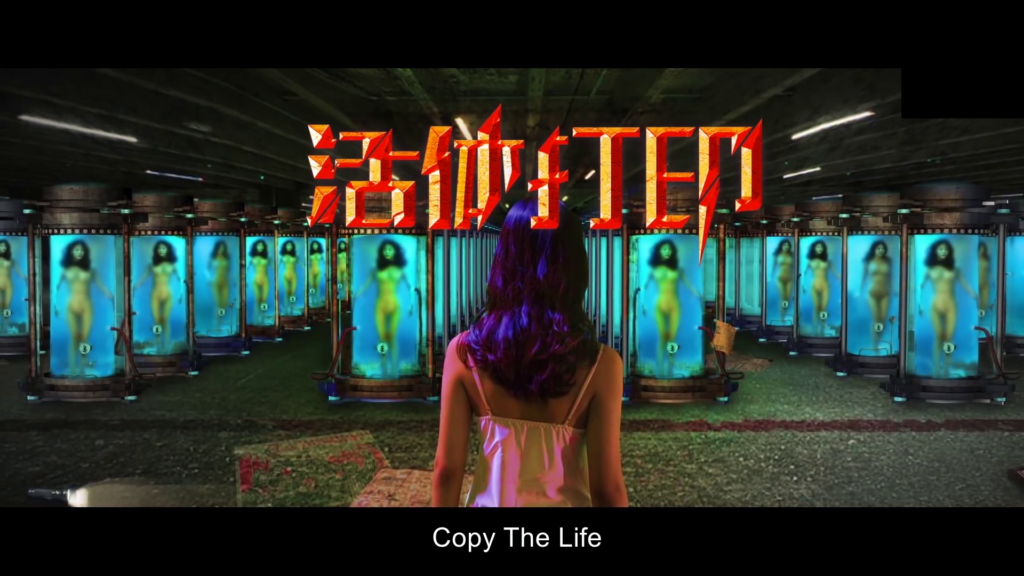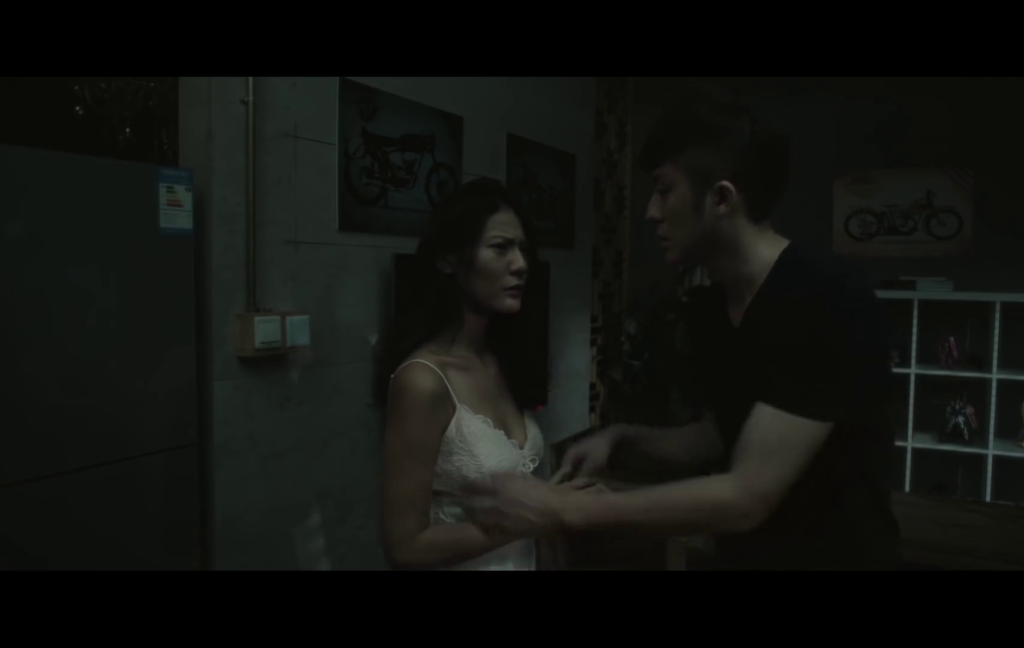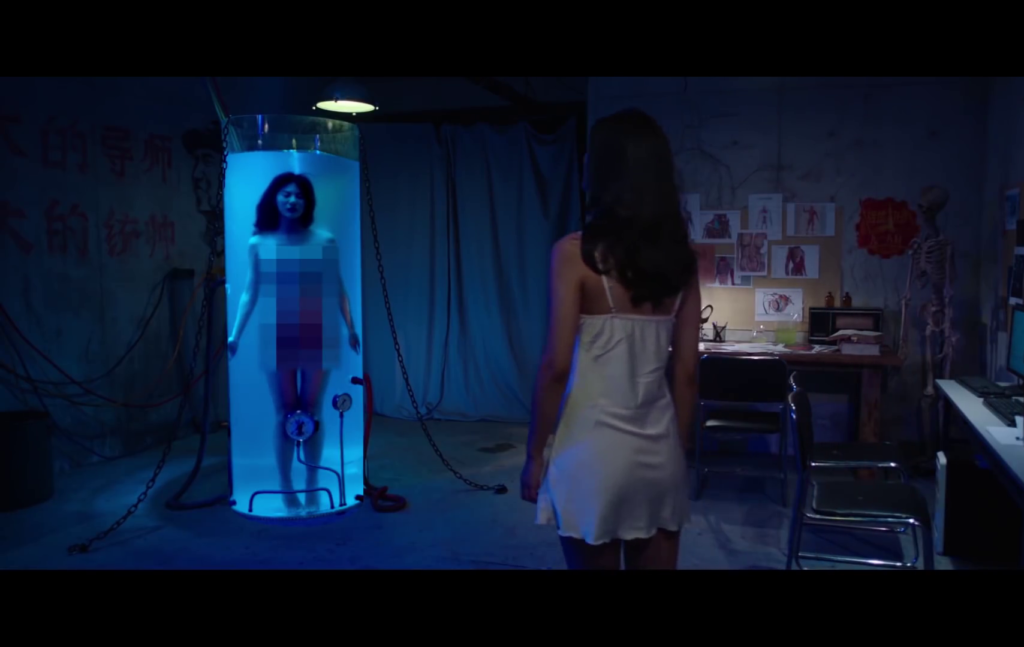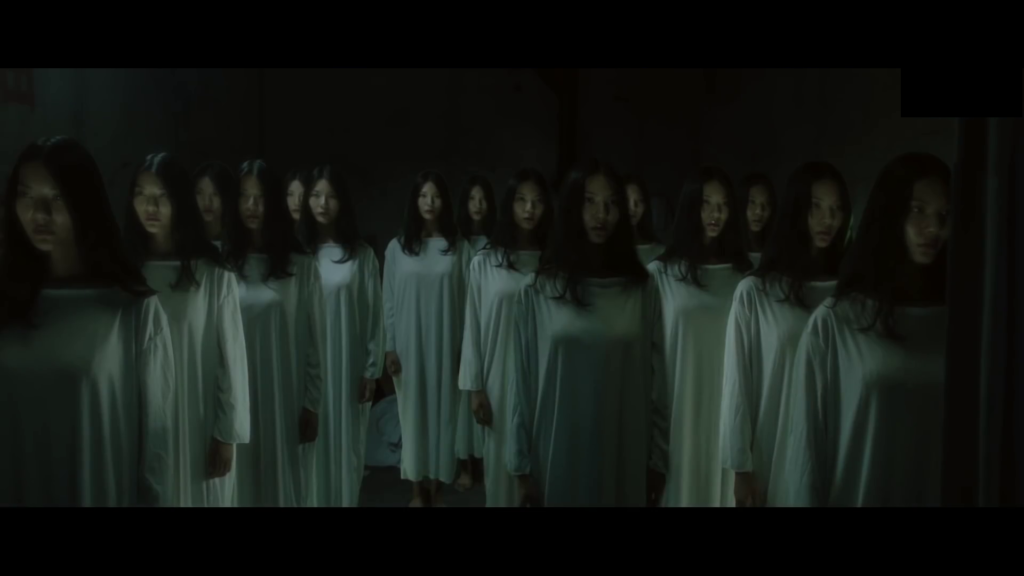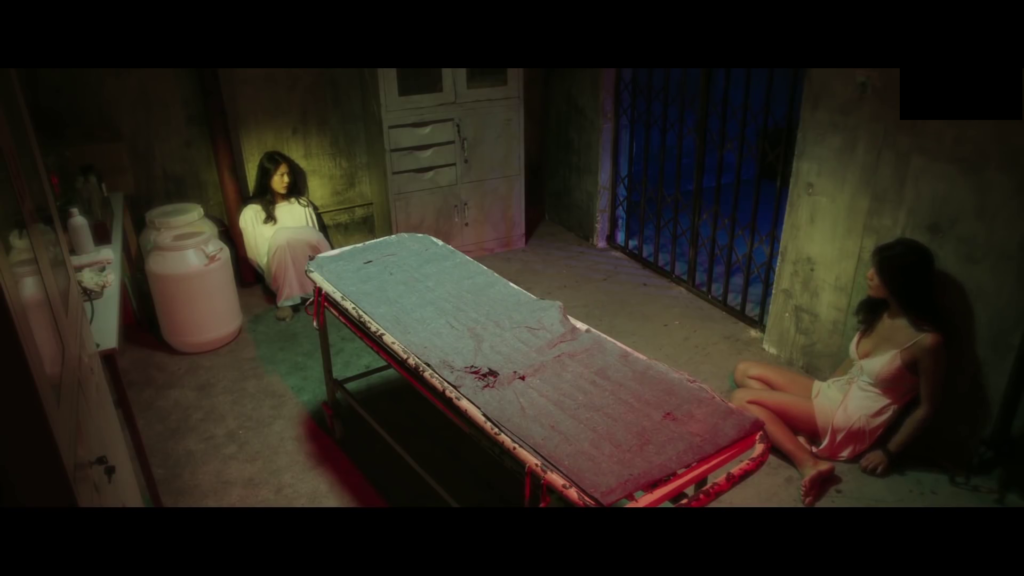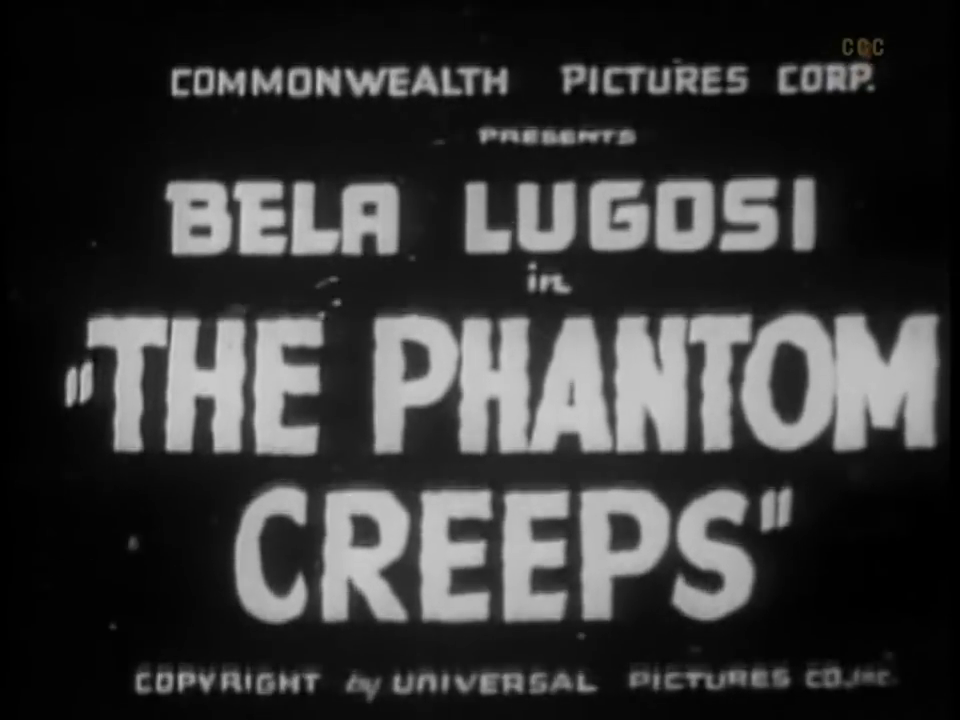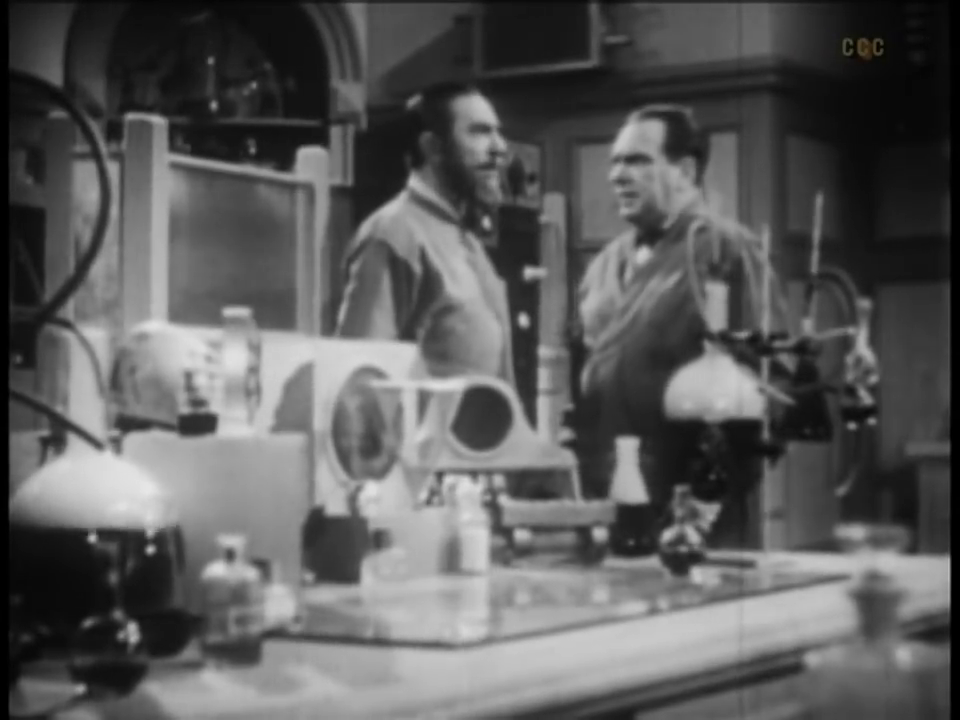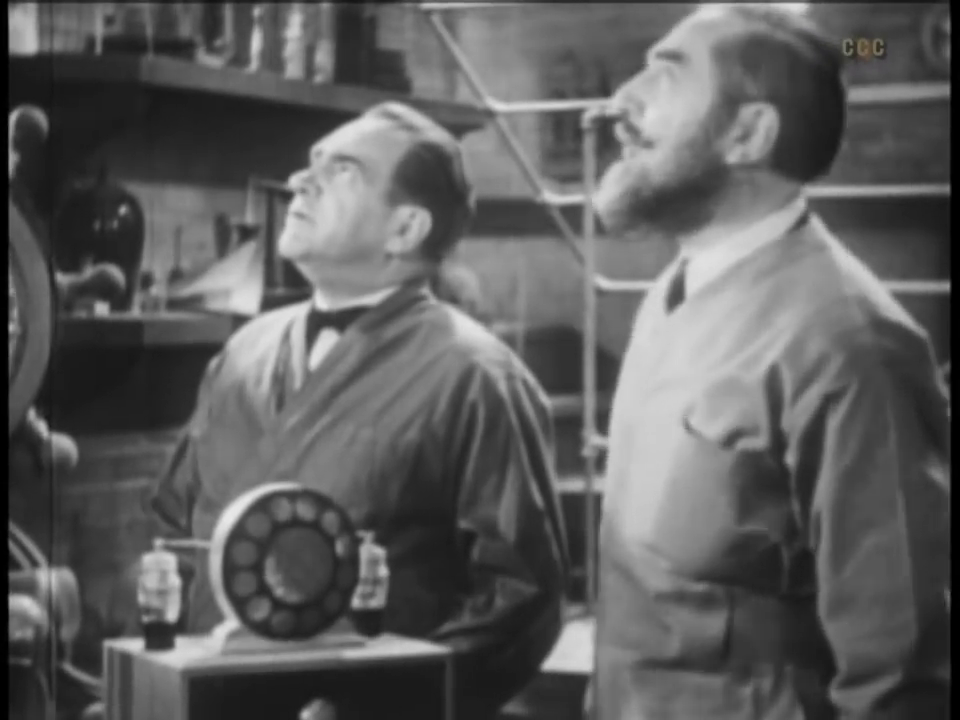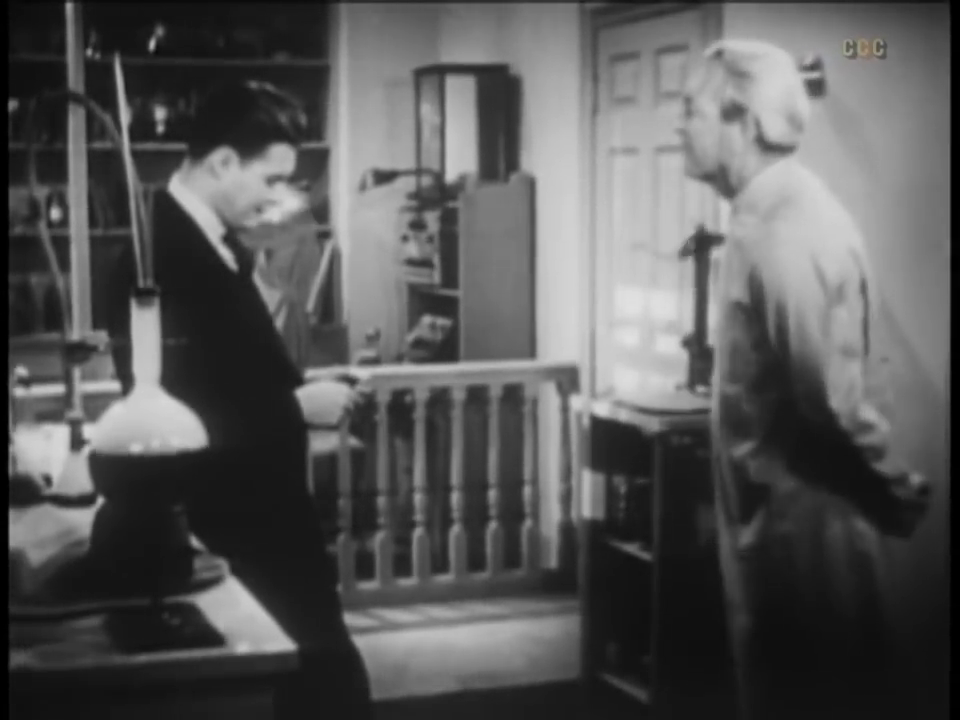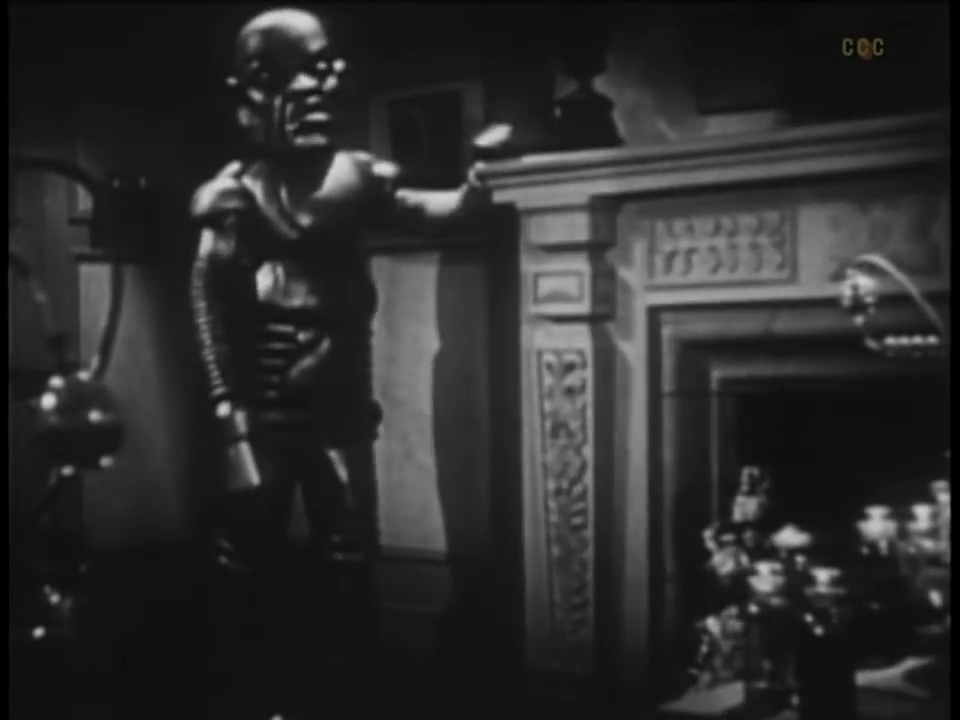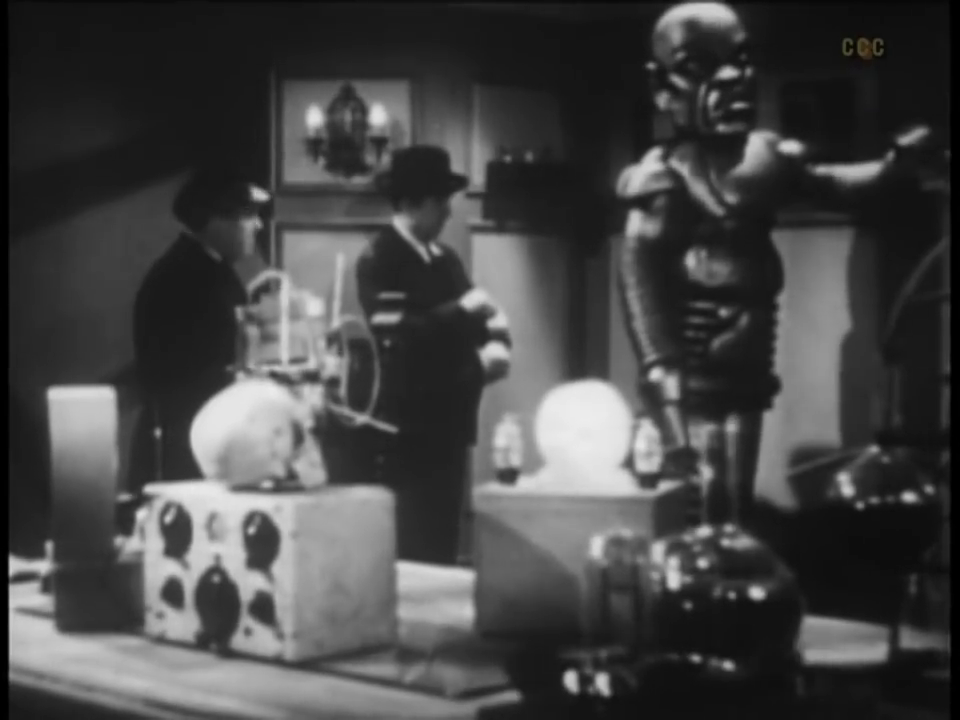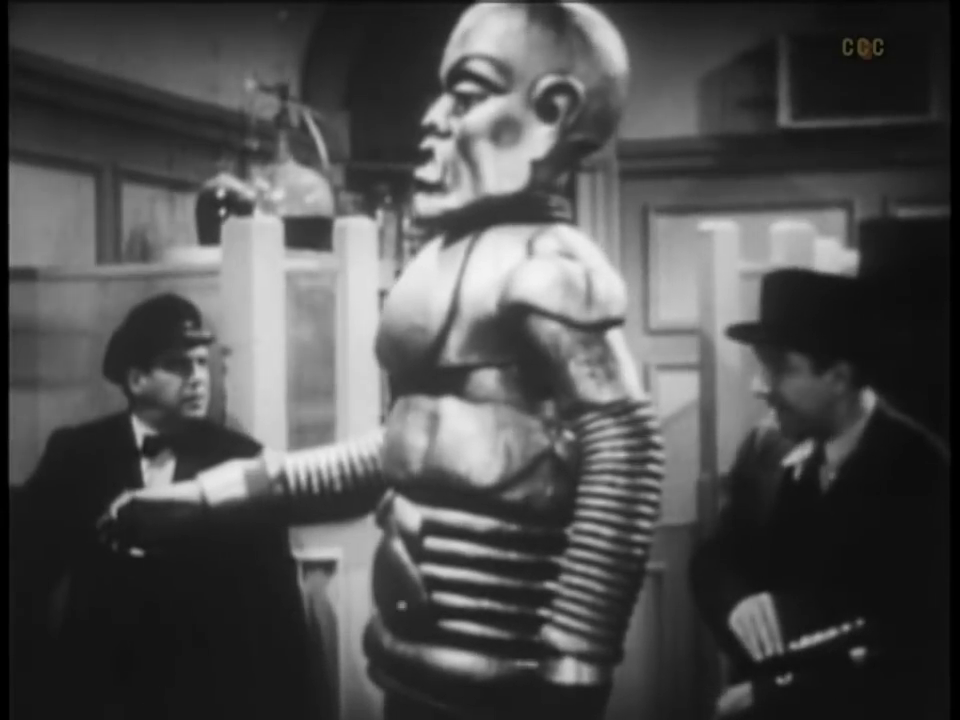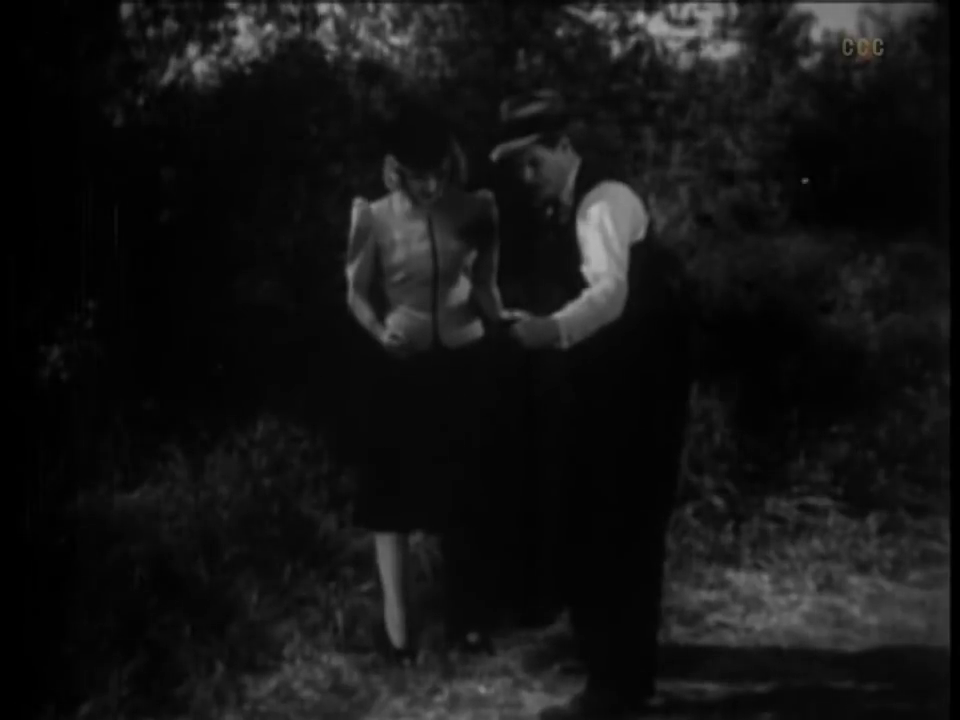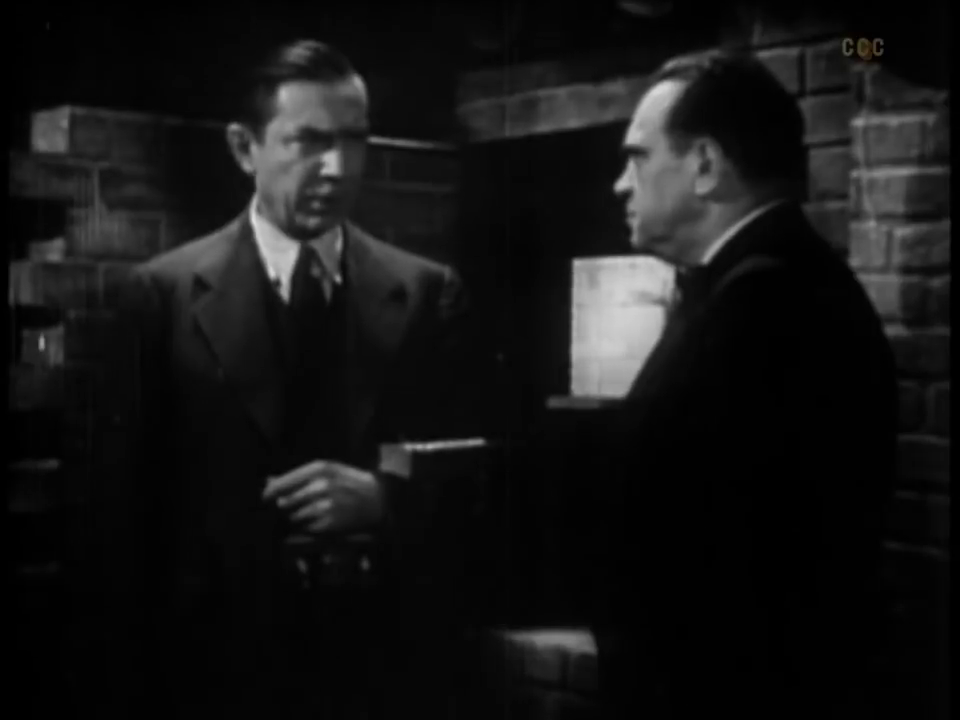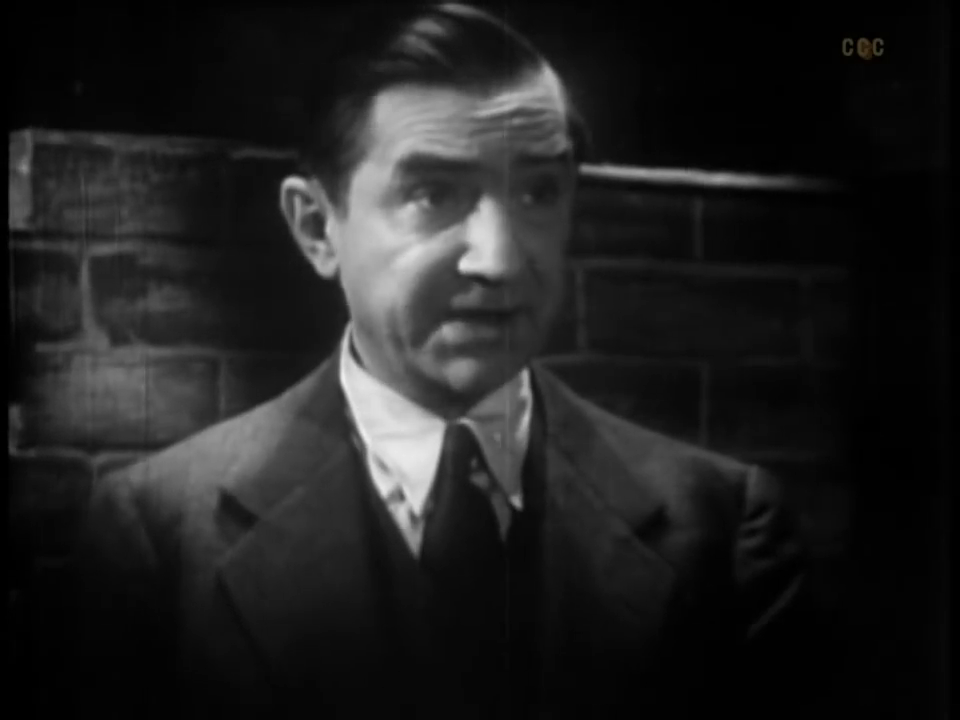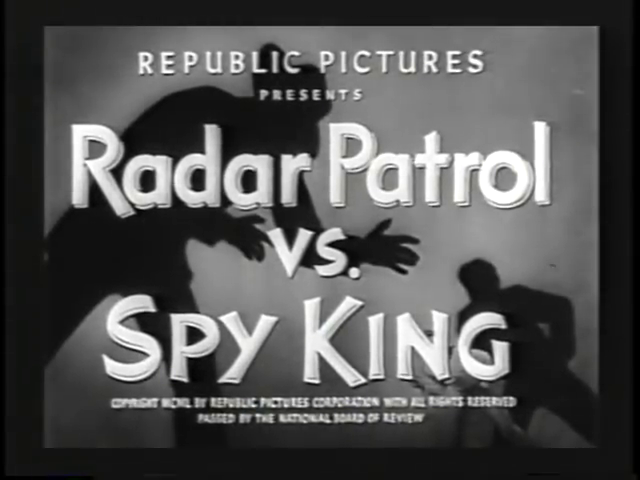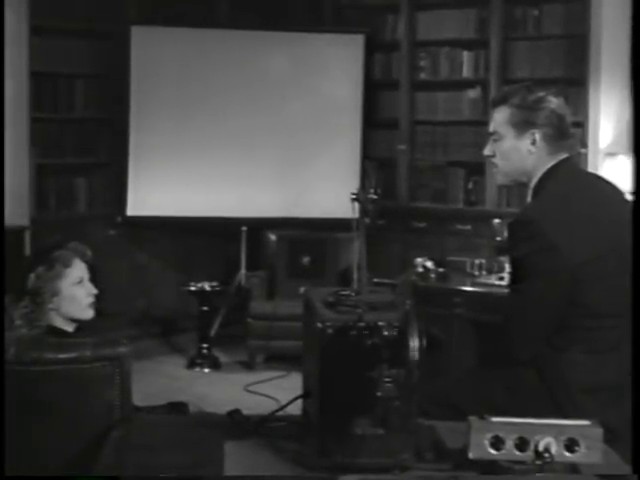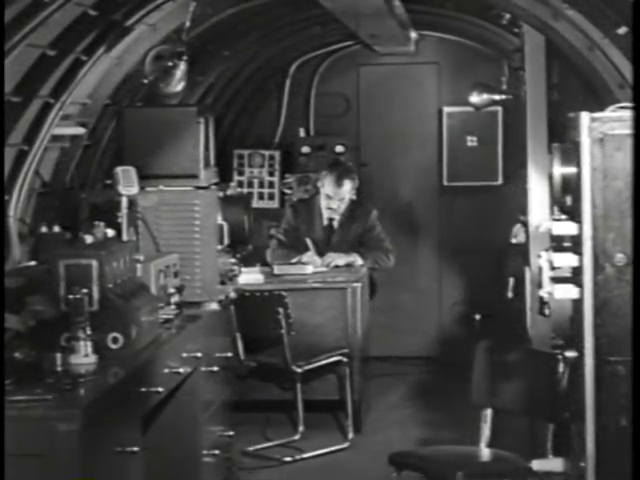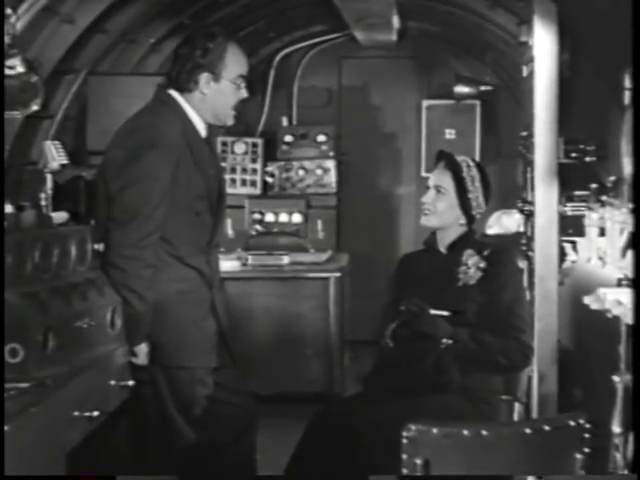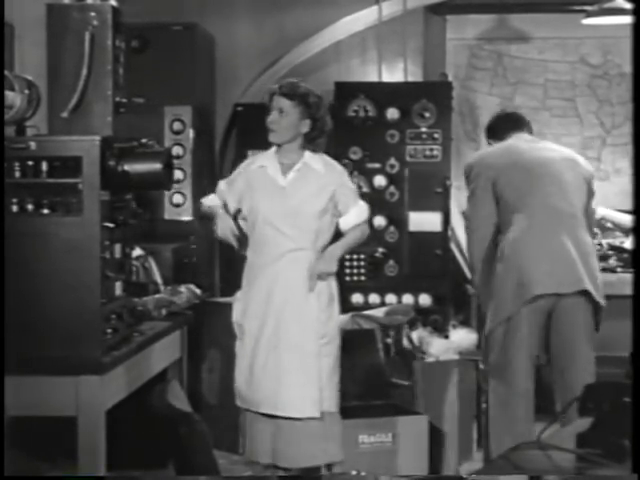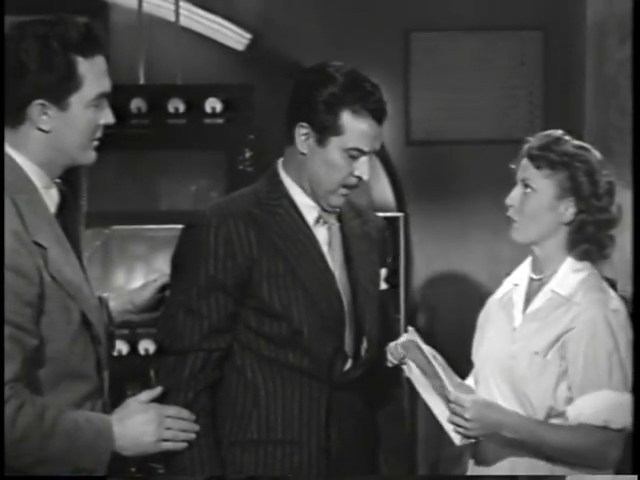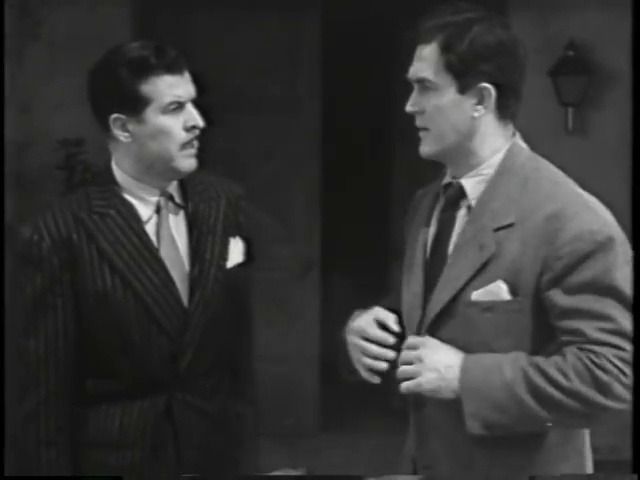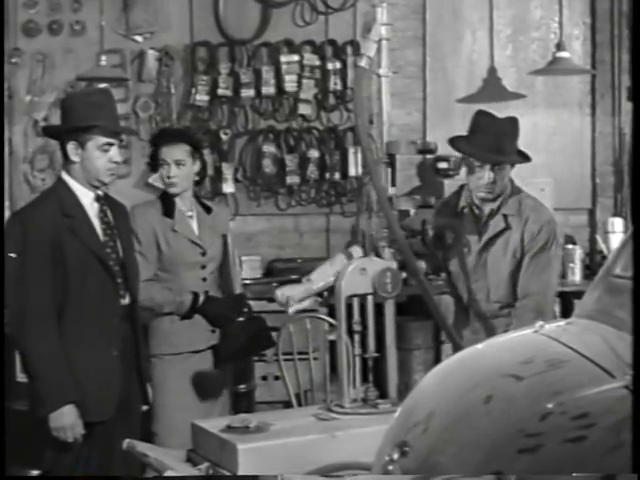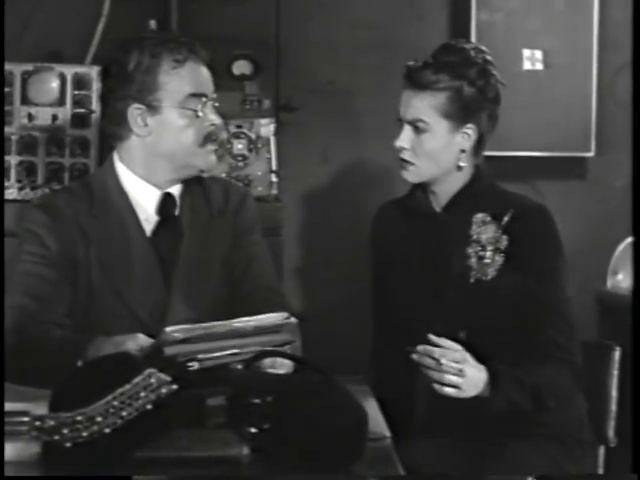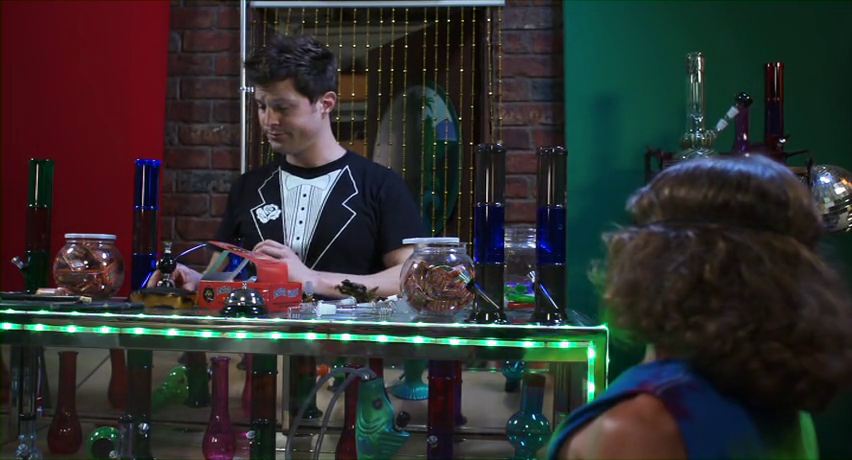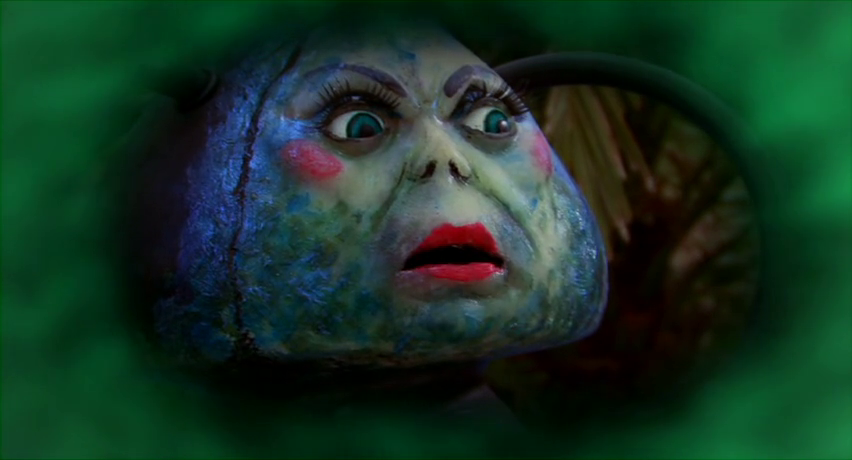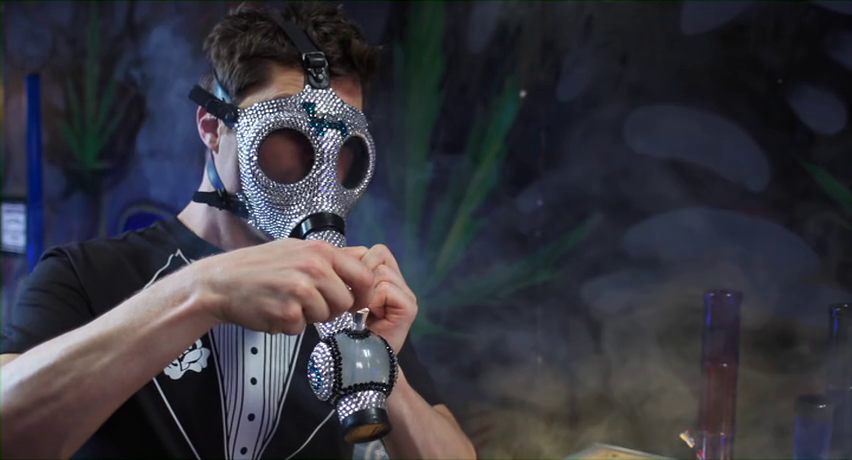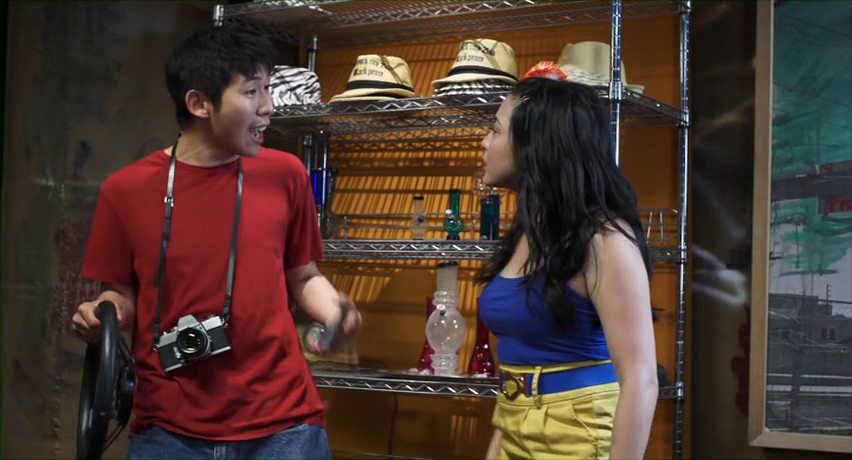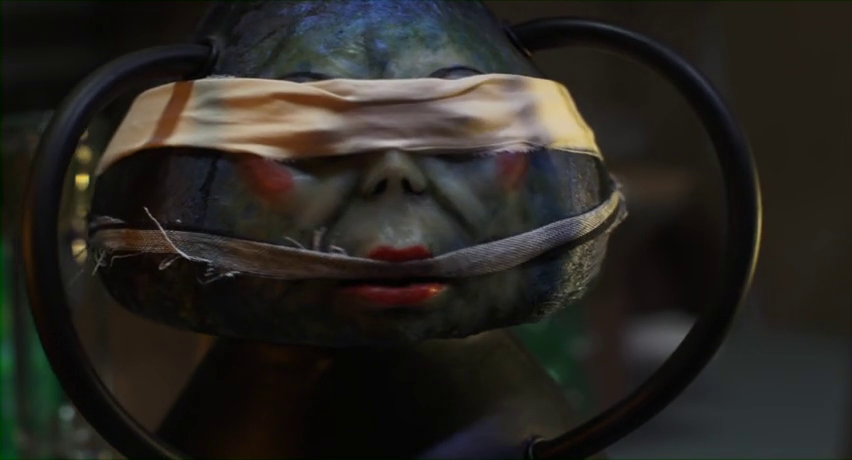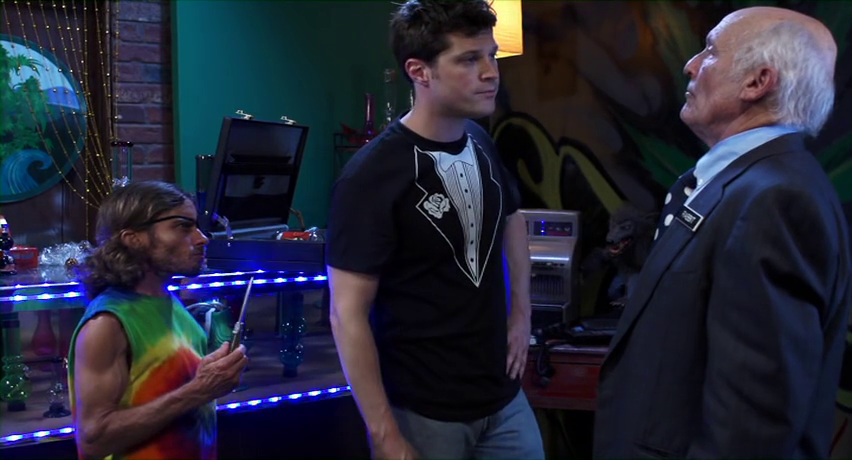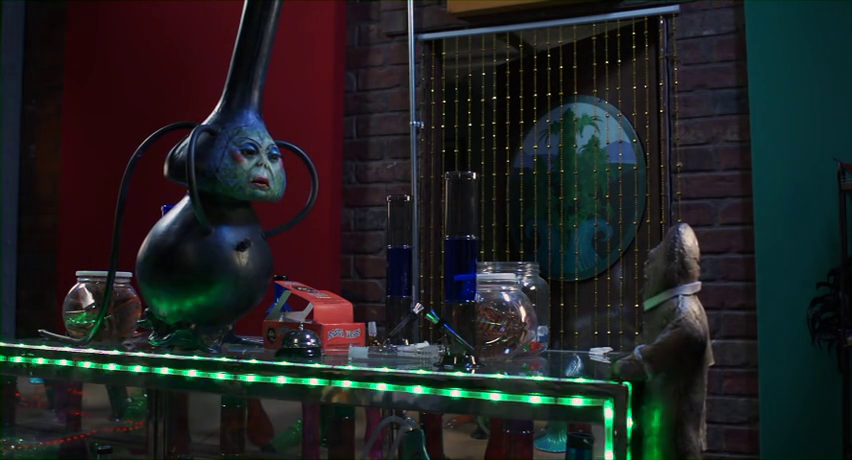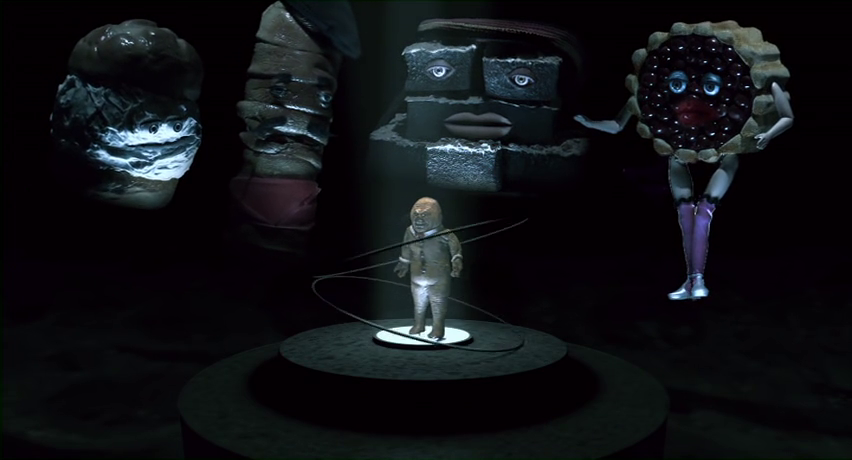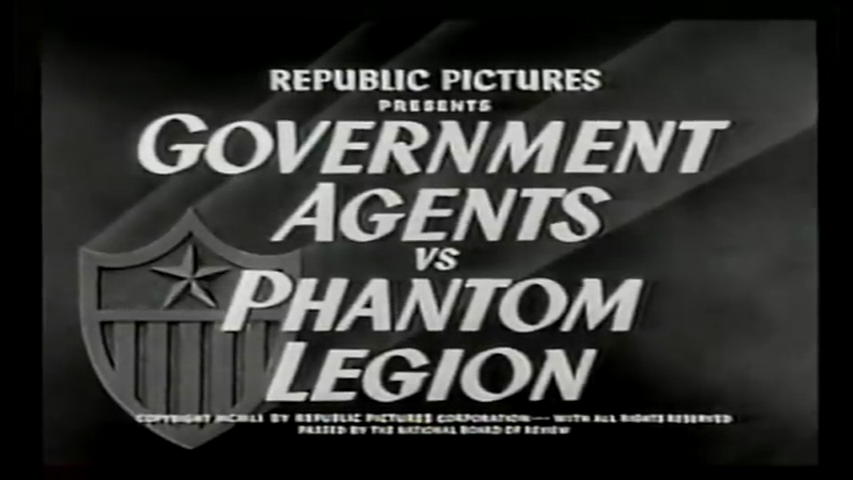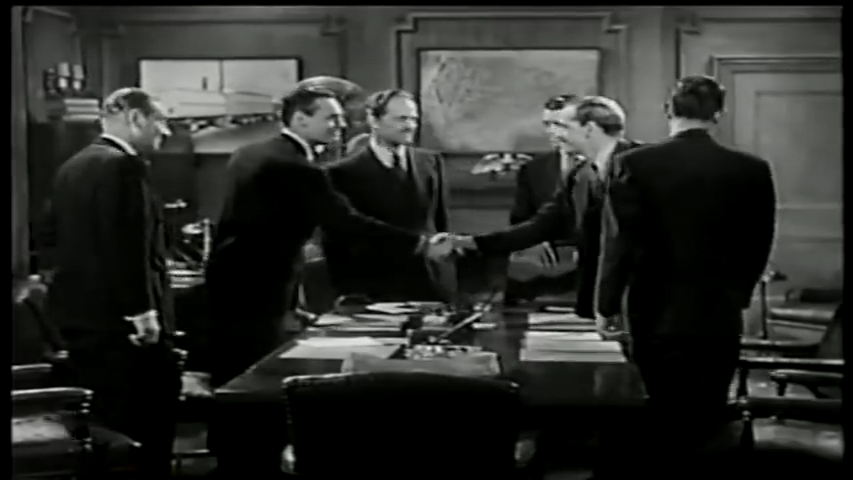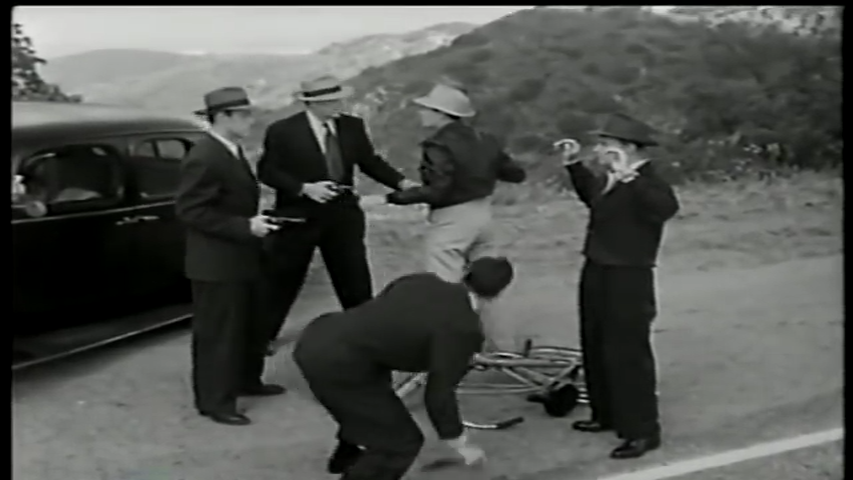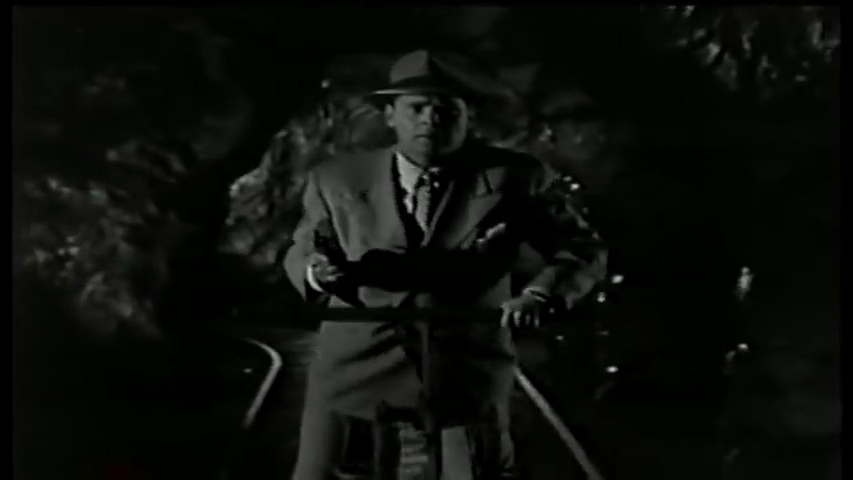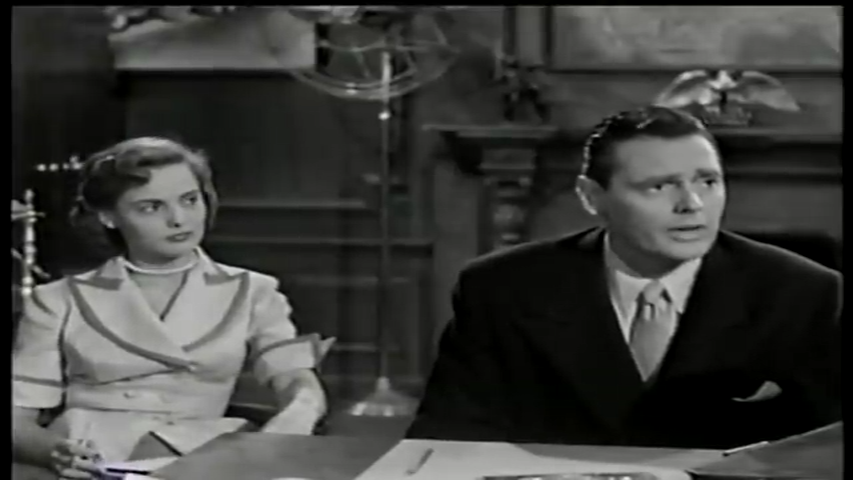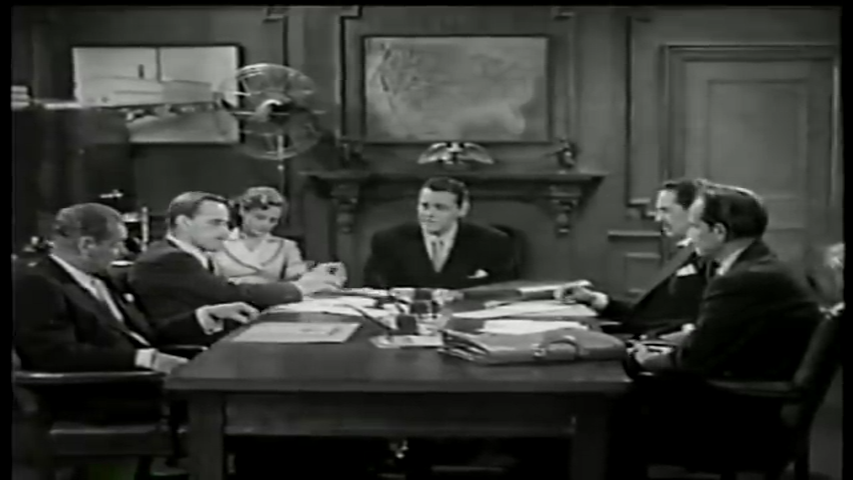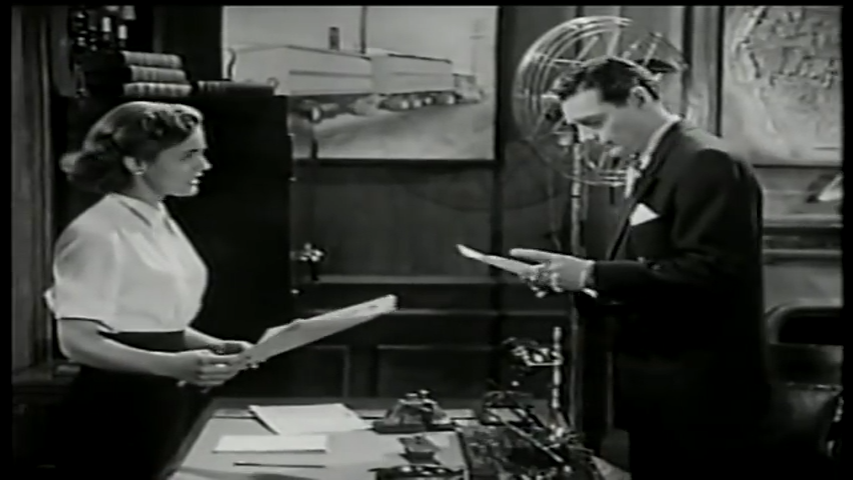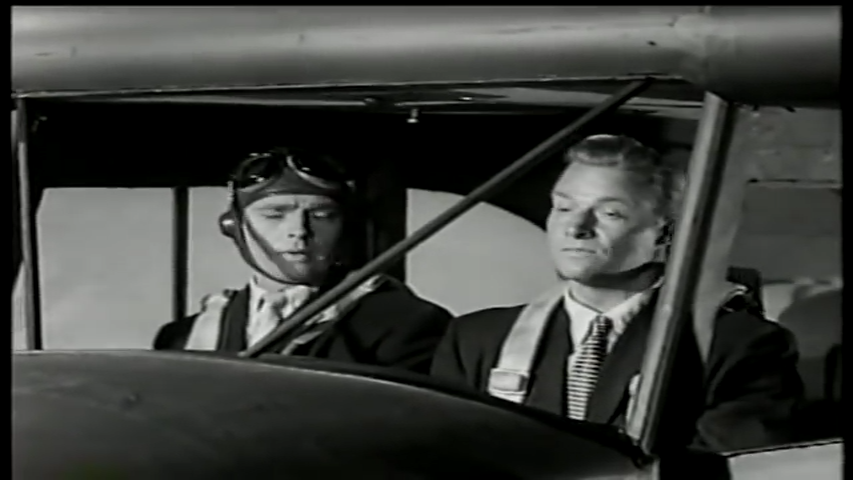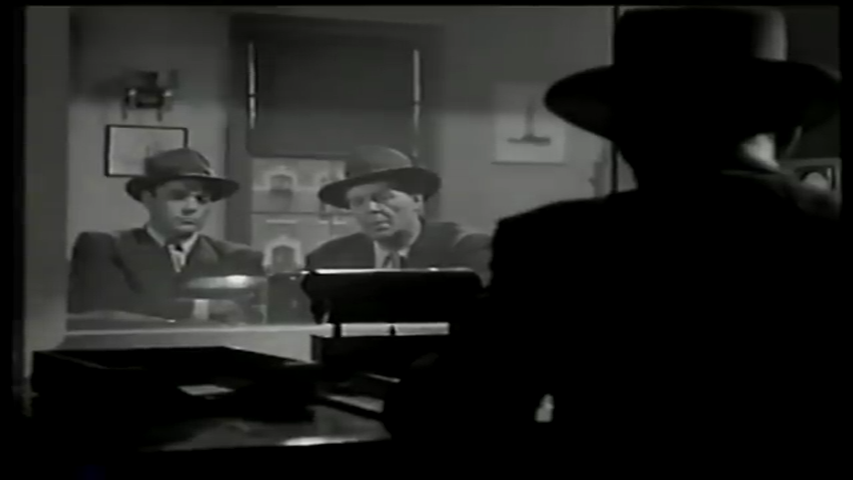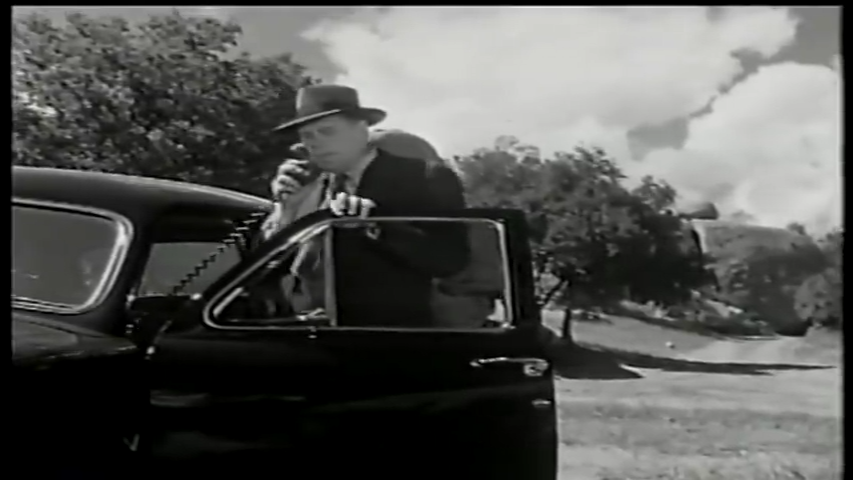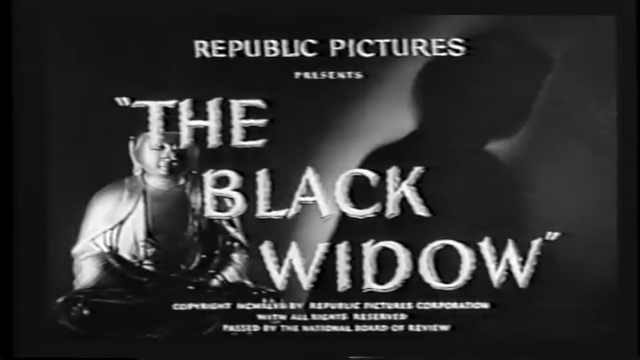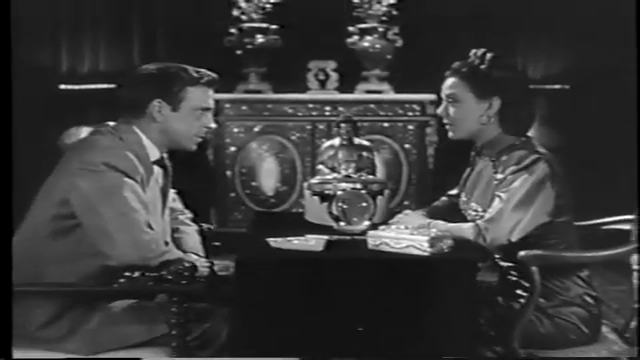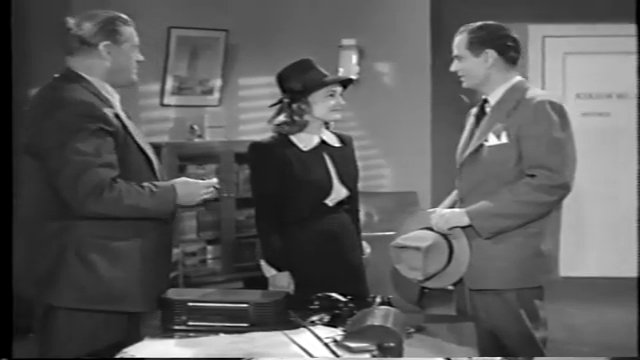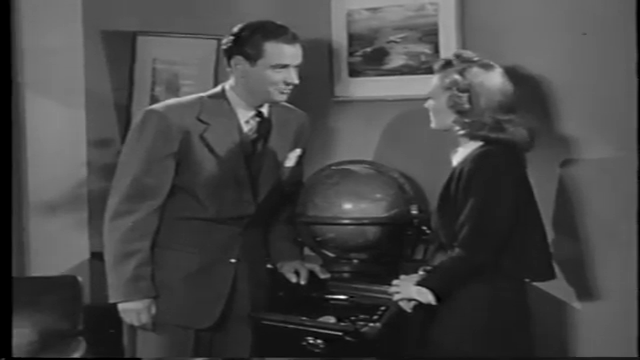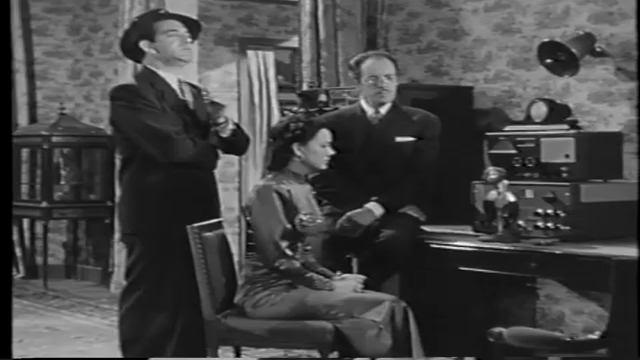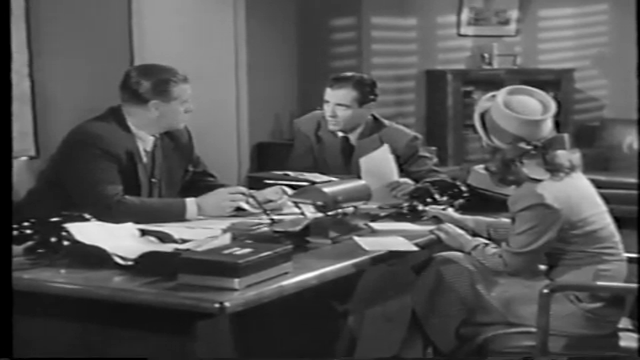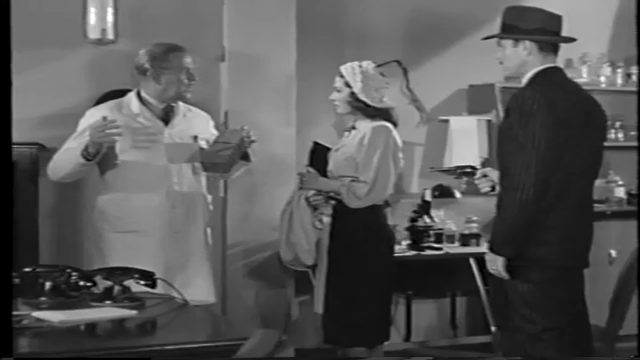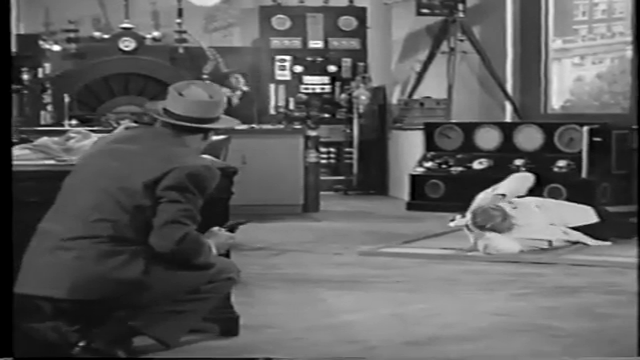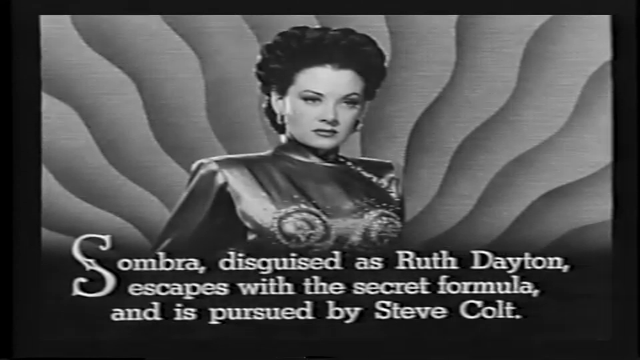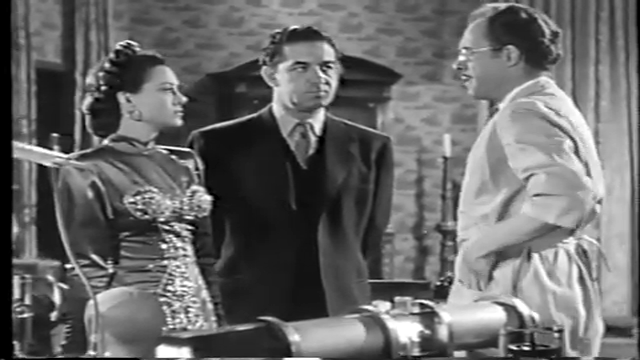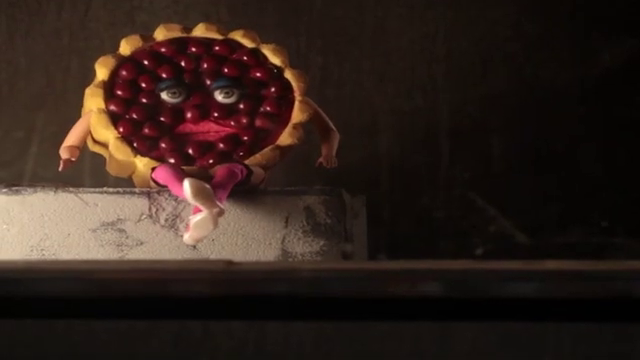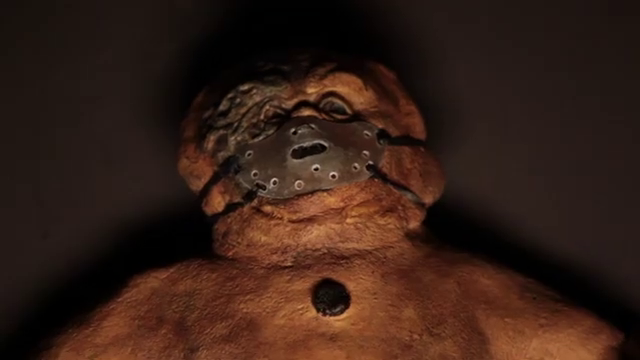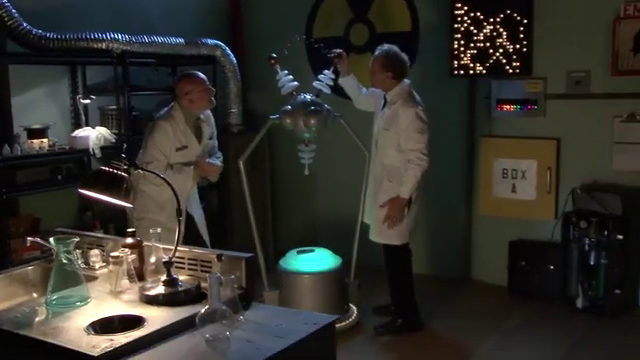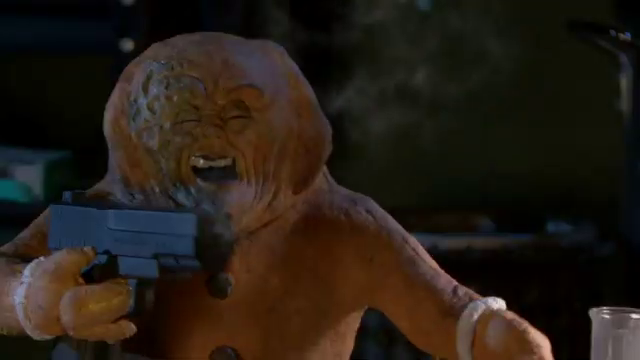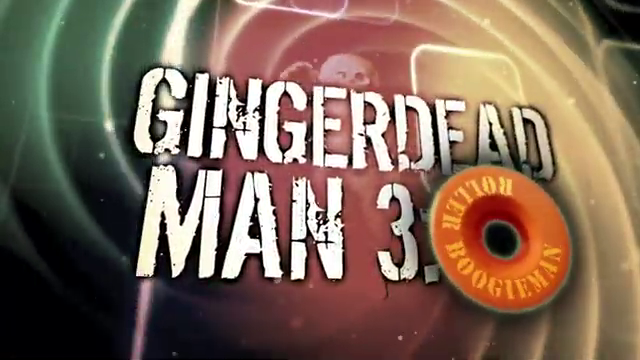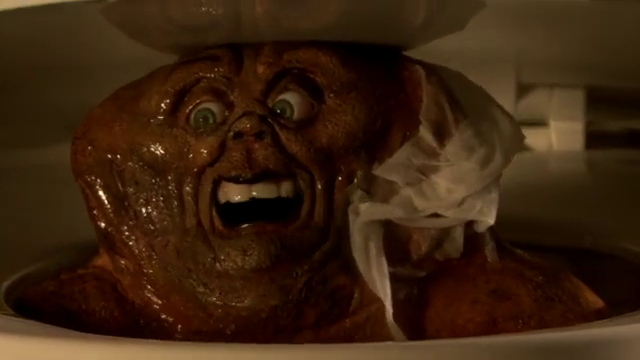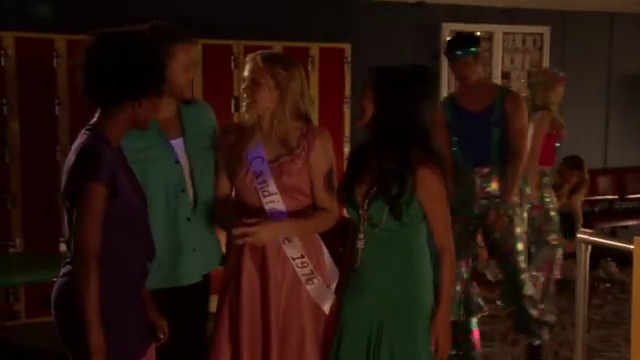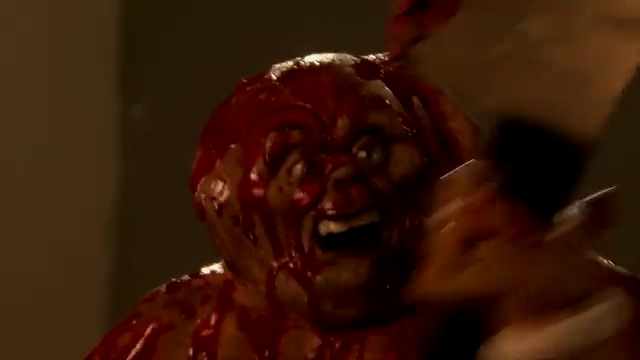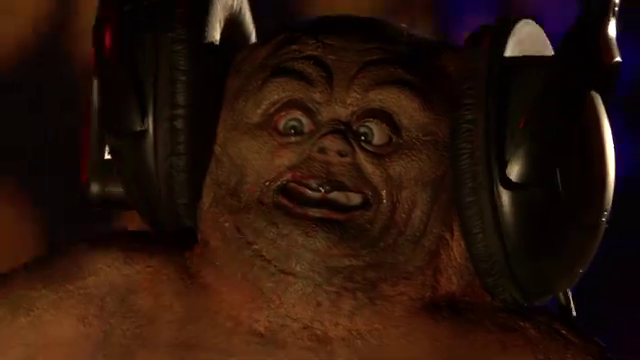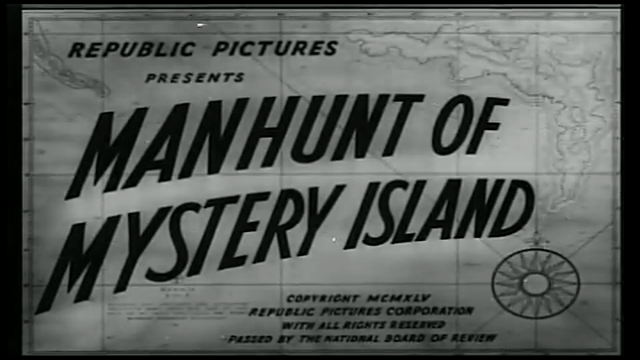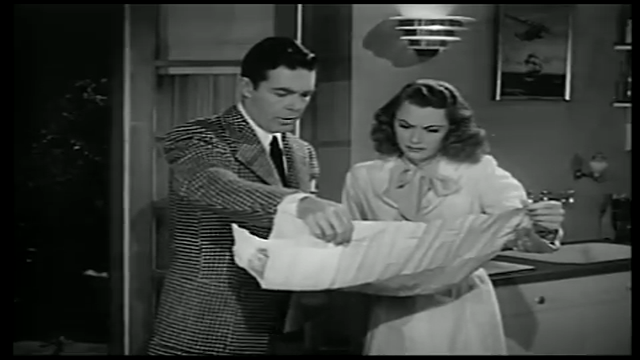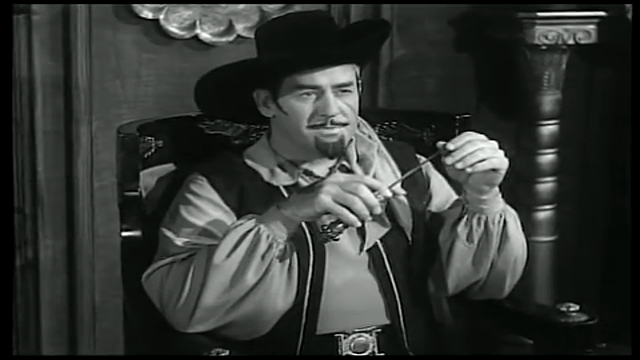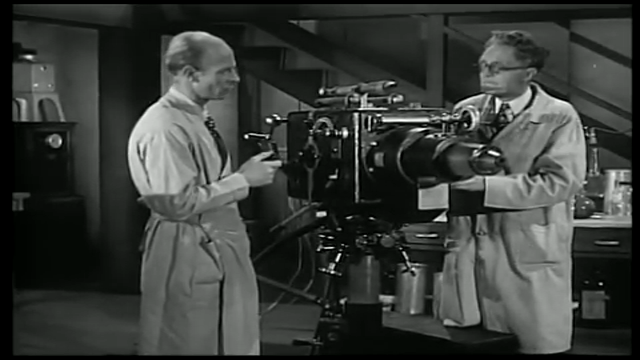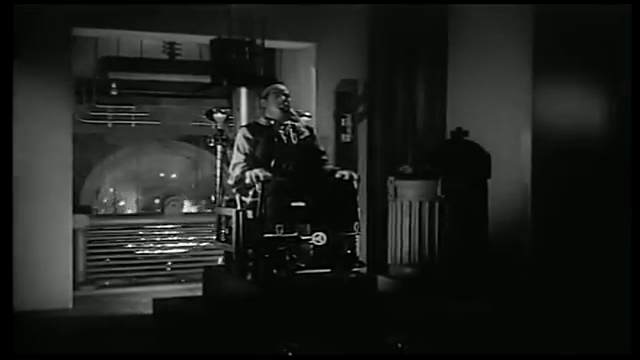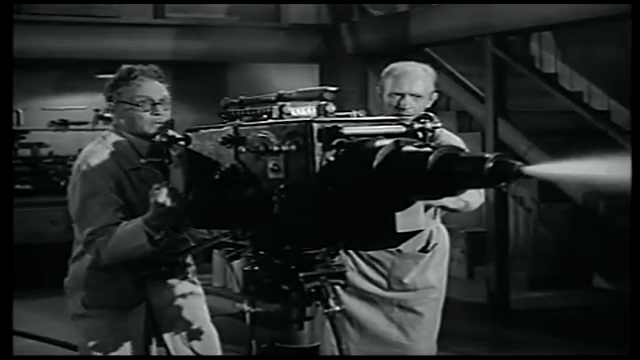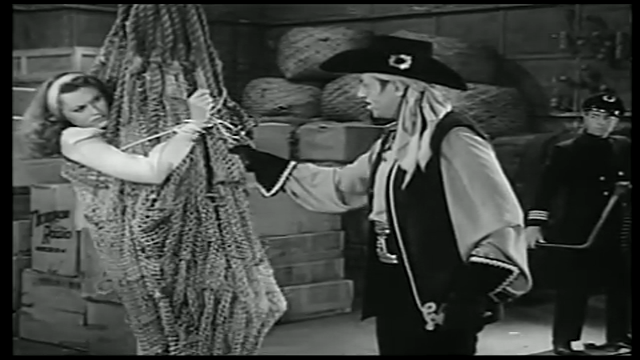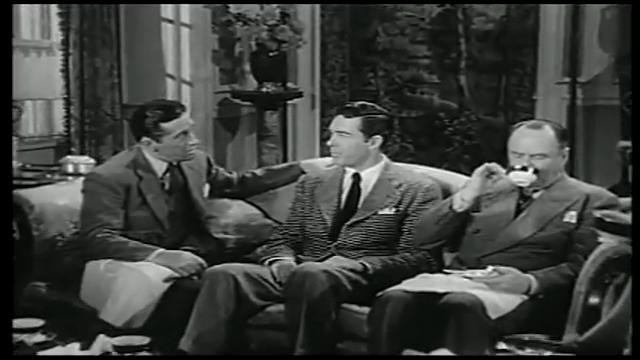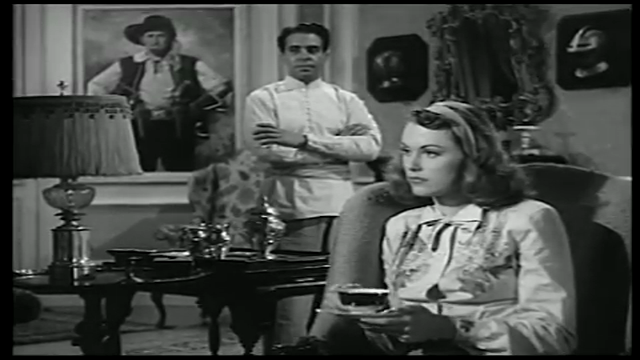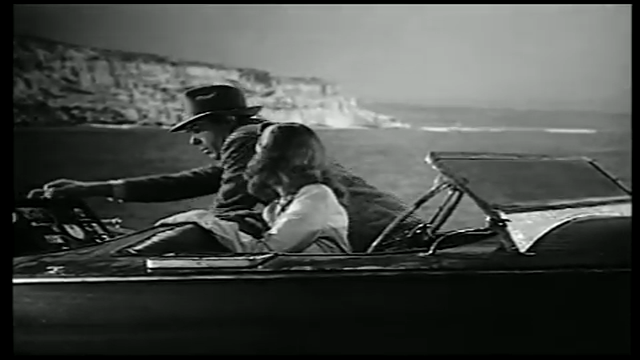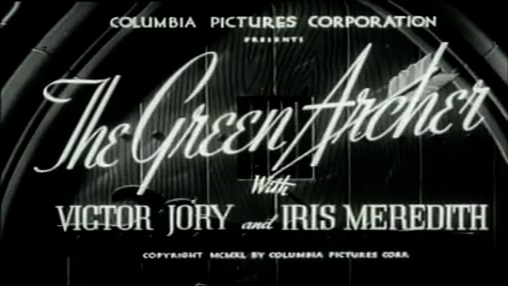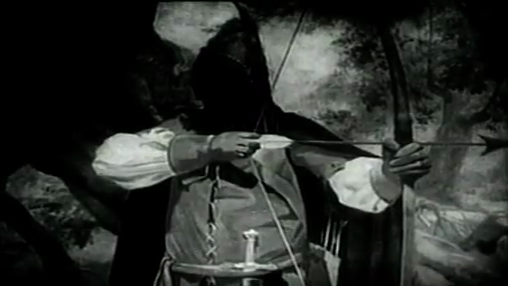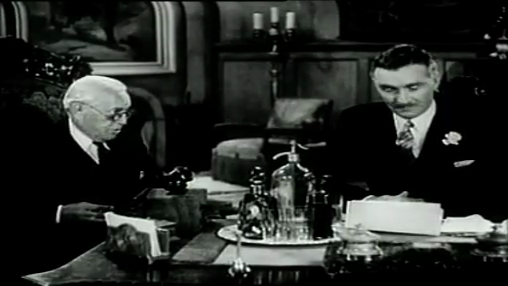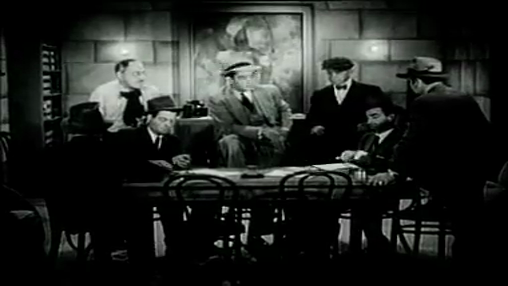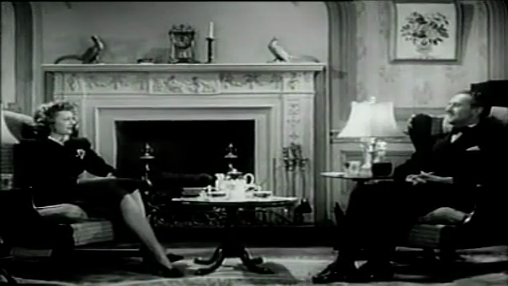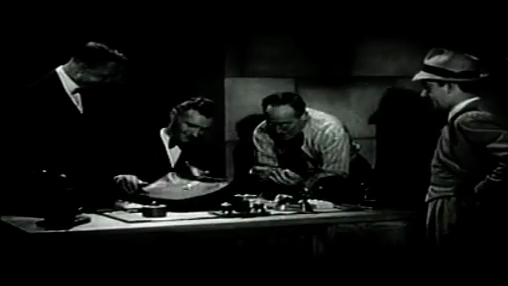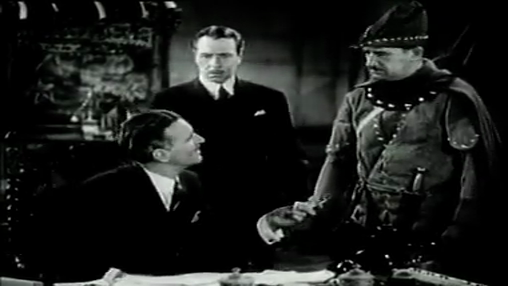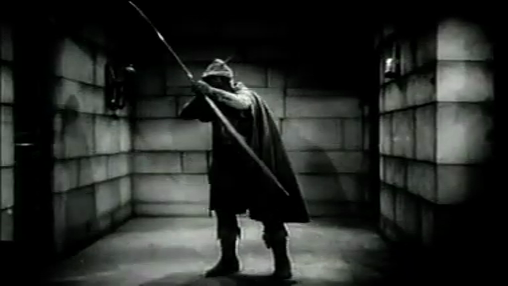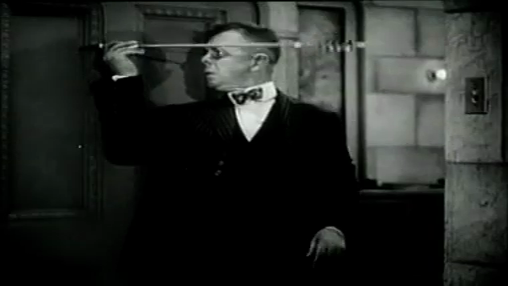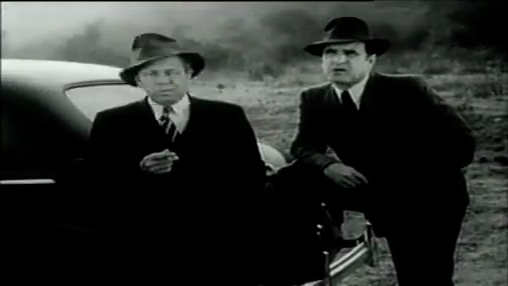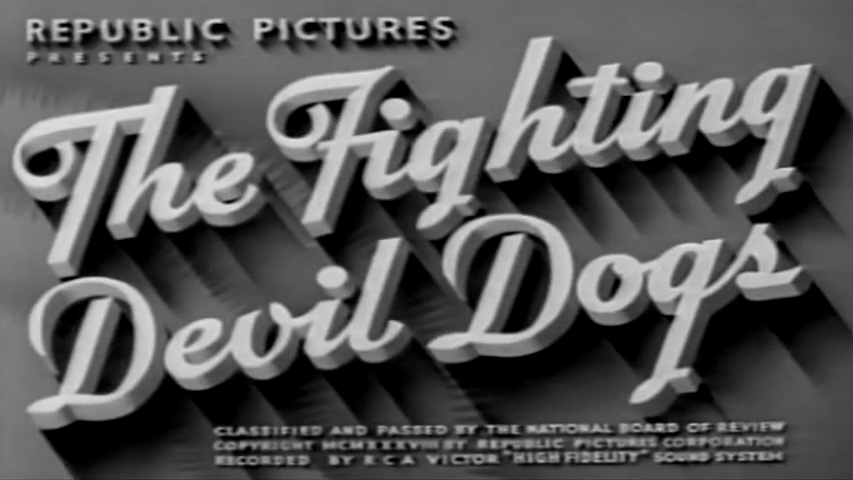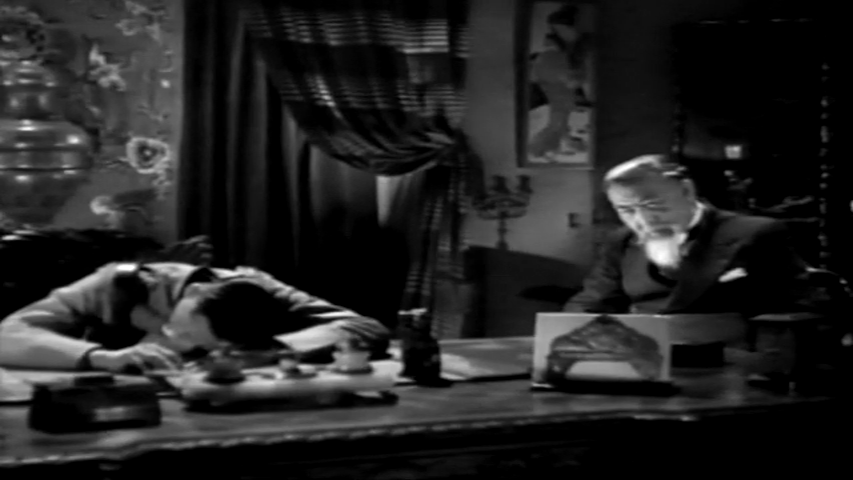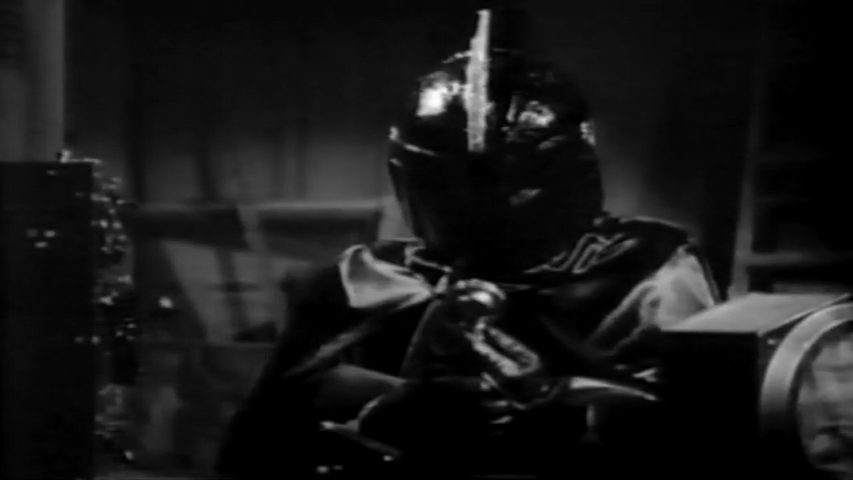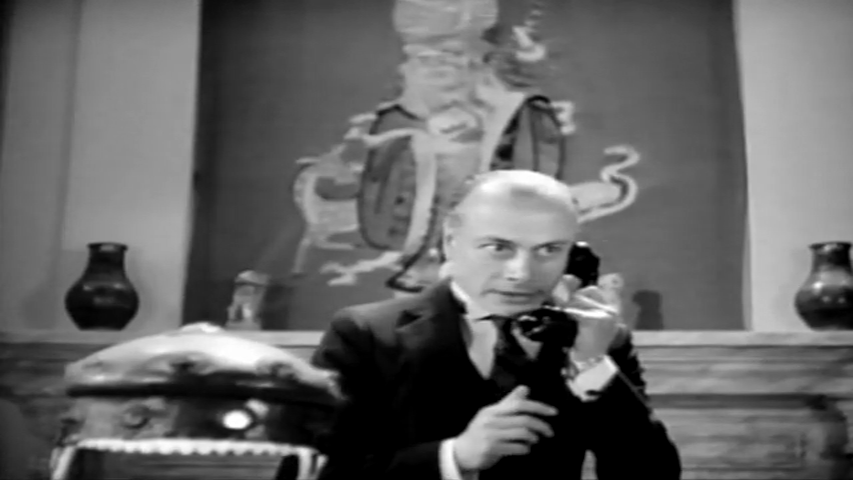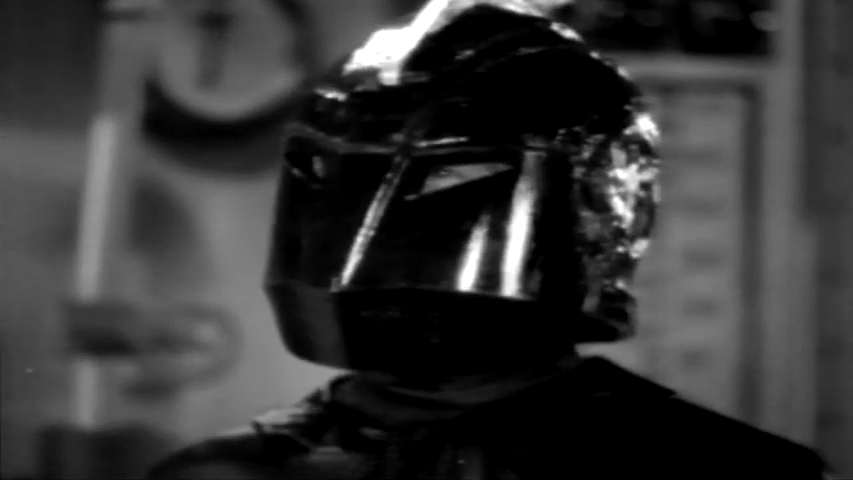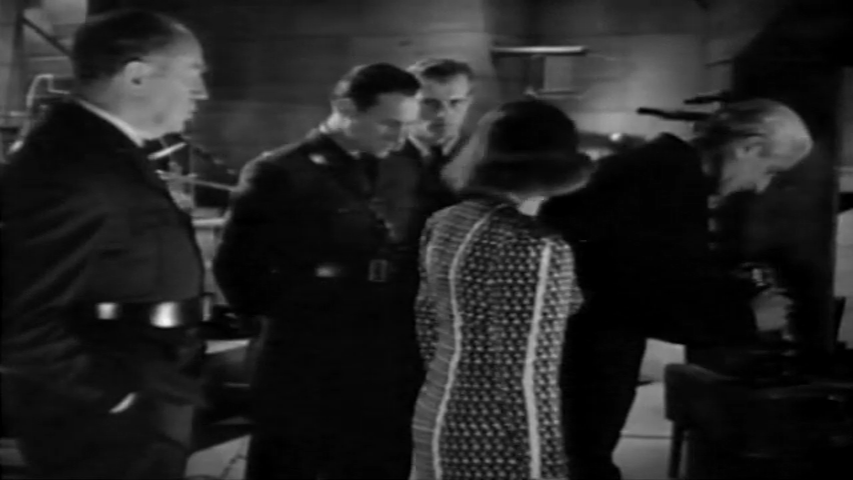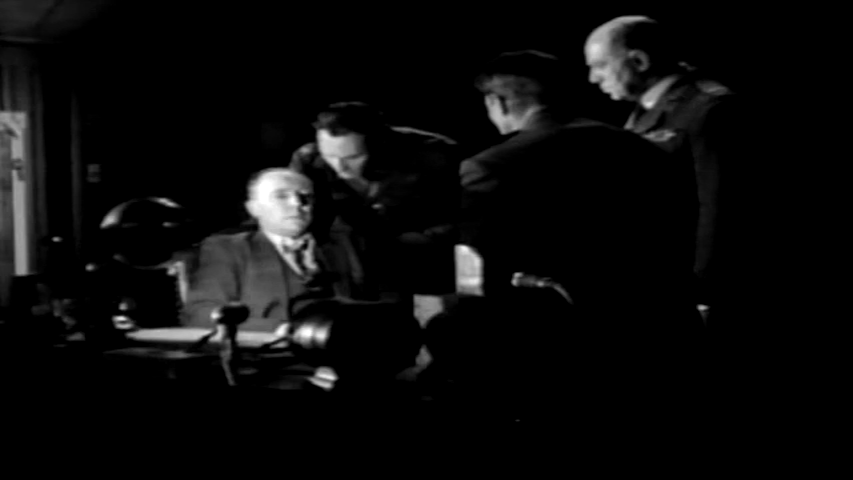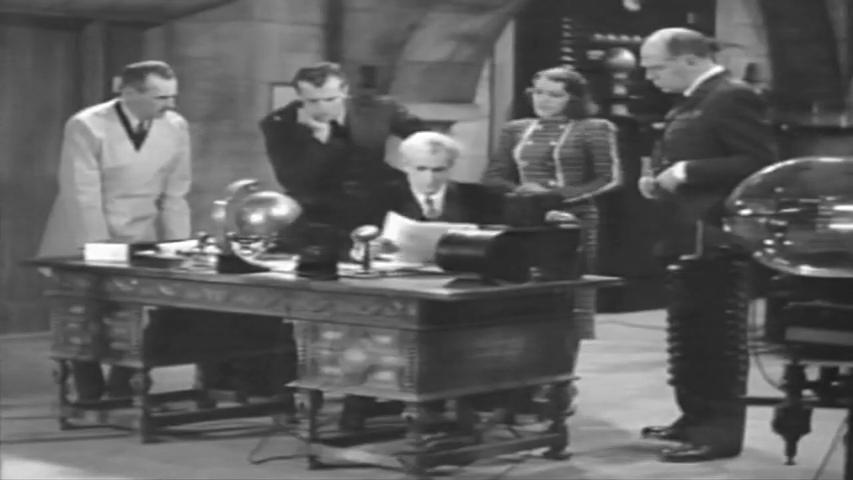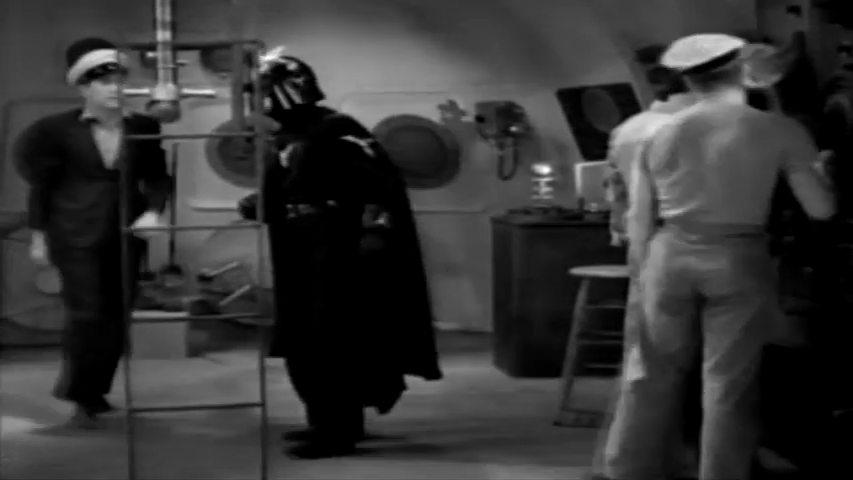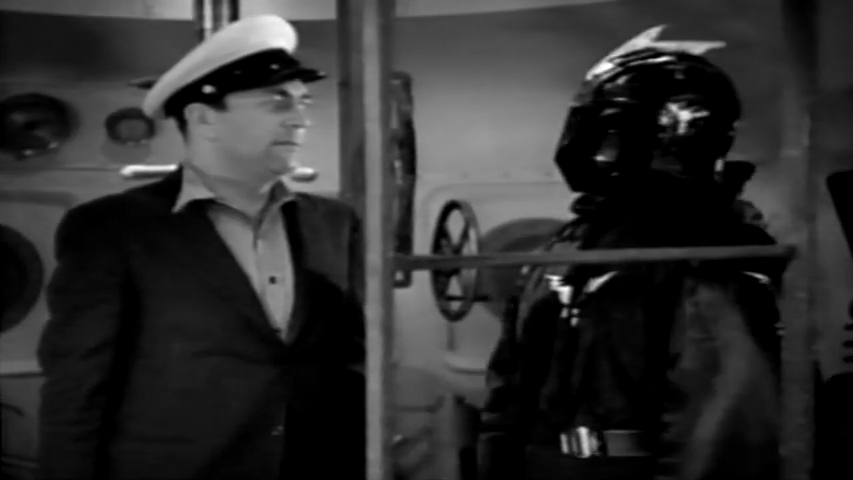-
#457 – My Girlfriend is a Duplicate (2021)
My Girlfriend is a Duplicate (2021)
Film review #457
Directors: Xing Guangjun, Tu Biao
SYNOPSIS: Chen Fei often wakes up after having a dream where her boyfriend Ma Jia tries to choke her. Ma dismisses it, but when Chen gets suspicious about Ma’s work, she discovers a secret laboratory under their home, within which a number of clones of her are being stored. It turns out that she herself is one of these clones of Ma’s girlfriend that he accidentally killed, and that the cloning technology is being sought by a nefarious organisation…
THOUGHTS/ANALYSIS: My Girlfriend is a Duplicate is a 2021 Chinese romance sci-fi film. It is based on the novel “Dragon Fleet” by Tu Biao, who also co-directs this film. The film centres around the young couple Ma Jia and his girlfriend Chen Fei. She is beset by bad dreams about being choked by her boyfriend, which he dismisses as just stress. Ma himself is heavily distracted by his research, which brings in no money for them, and is an added source of stress. When Chen gets curious about the basement of their house, which Ma maintains is just full of junk. When Chen eventually makes her way down there to investigate, she makes a startling discovery: a large number of clones of herself in suspended animation. She eventually learns from one of the other clones that they are all – herself included – clones of the original Chen Fei, who was Ma’s girlfriend before he accidentally killed her. However, he was able to “print” clones of her thanks to the research he has been doing that builds upon his Father’s own research; part of a secret government project to enhance the health of its citizens. The story has a fair amount of different elements in it from romance and science-fiction, so the story has some variety in it. The science-fiction aspect is the most interesting aspect of it, as we learn about the couple’s past. The romance aspect isn’t developed very much, and plays out with beginning as a typical young couple, and never really exploring how this discovery would affect their relationship. When Chen makes the discovery, the film shifts almost entirely to the science-fiction genre, with a lot of the story told through flashbacks. At just over an hour long, we don’t see anything more than these series of flashbacks and a brief follow-up focusing on the consequences of it.
The cast of the film is minimal, with the couple being the main point of focus for relationship drama, and a villain who emerges near the end. There’s some dialogue involving another clone of Chen, referred to as No. 126, and the ‘current’ clone of Chen, but it seems to set her up as her own unique character and then never go anywhere with it. I’m not sure if you’re supposed to empathise with Ma, given that he did kill his girlfriend, and has to continue re-cloning her as the clones have a fairly short lifespan. The ethics of the whole process seems very much unexplored, which seems odd for a science-fiction film, but less odd when you consider which country it is produced in.
In terms of production, the film isn’t up to the standard of big budget Hollywood films: the editing is awkward, and things often move around between shots, which disrupts the continuity. There’s also the rather unconvincing special effects and the wooden acting that doesn’t convey the powerful feelings that this couple are supposedly supposed to have for each other. The most interesting aspect of this film, as with most films produced in country’s with strict censorship programs, is how the film has to do and show certain things to be approved for release. At the start, we are told about a secret government bureau made to improve the health and wellbeing of the Chinese people, but it is done in such a way that it doesn’t make the government look bad or keeping dark secrets from the public. As such, any more details about how secret the bureau is and what it actually did is not addressed. The villain is outlined as being a traitor who wants to steal the Bureau’s research in order to sell it to China’s age-old enemy Japan. There’s also a scene where the villain goes to pray at an altar with what I presume is meant to be the Chinese Premier, to which Ma calls him out to “stop pretending” that he is paying his respects. This again is obviously reinforce the message that the villain is not part of the government and is this traitor that deserves no sympathy. As mentioned earlier, sci-fi films such as this would usually address the ethics of the concept of cloning, and whether it is right to do it. This film completely avoids saying whether it is right or wrong: the only wrong it highlights is selling the secrets to a foreign enemy. It is perhaps important to highlight that the Chinese government is often found at the forefront of cloning research, and any kind of critique could easily be seen as a critique of government research. The trouble is that such explorations of ethics and possibilities of science and technology really is at the core of the science-fiction genre, and in completely avoiding that part of it, this film feels quite pointless and empty.
-
#456 – The Phantom Creeps (1939)
The Phantom Creeps (1939)
Film review #456
Directors: Ford Beebe, Saul A. Goodkind
SYNOPSIS: An evil scientist named Dr. Zarko has developed inventions that he intends to use to take over the world. With the government and foreign spies constantly trying to get him to get a hold of his inventions, Zarko is uninterested until his wife his killed, when Zarko swears vengeance against the world. Faking his own death, he adopts a new disguise and sets to work. Bob West, a government agent, works together with Dr. Frank Mallory, Zarko’s once-assistant, and journalist Jean Drew to try to foil Zarko’s various attacks and the spies who want his work, while beginning to suspect Zarko is not dead after all…
THOUGHTS/ANALYSIS: The Phantom Creep is a 1939 film serial composed of twelve chapters. Most notable for featuring film icon Bela Lugosi as the villain, it would also be the last movie serial he would star in. The serial starts off introducing Lugosi’s character Dr. Alex Zarko, a brilliant scientist but a bit eccentric as he likes to play tricks on the government agents and foreign spies that are attempting to buy or steal his inventions. He takes everything in good stride until his wife is killed, and the thought of vengeance on the world completely consumes him, and begins using his inventions for evil after faking his own death. Government agent Bob West teams up with Dr. Frank Mallory, who was Zarko’s assistant who wanted him to donate his inventions to the government for the benefit of mankind, and left when he refused. Also working with Jean Drew, a journalist at a national newspaper. Together, they take on the spies that are attempting to get a hold of Zarko’s inventions, and investigate whether Zarko is really dead. One thing that stands out in this serial is all the various inventions that Zarko uses. He has invisibility, an eight-foot robot, robotic spiders that can paralyze people and also a device to put people into suspended animation. Normally, only one of these inventions would serve as the main plot point for a serial, but this serial gives us all of them. While all of these inventions have been the focus of other serials, having them all together like this gives some much needed variety, as different chapters focus on different things, and are used fairly creatively in the various schemes and set-ups. The plot has a lot of back-and-forth with the characters ending up at Zarko’s old home many times, only to be continually come under attack and being surprised when they do so. The story goes round in circles and lacks some direction with so many different things happening, but it’s better than nothing happening, which is what many serials do when they try to stretch very little over twelve to fifteen chapters.
In terms of characters, they are nothing special: there’s all the usual characters from the young action-hero, the sole female etc., but the star of the serial is obviously Bela Lugosi, who gets first billing, and is always the star of every film he is in. His performance is similar to his usual roles (he is the villain in a few serials), but he undoubtedly draws in the audience for those very roles. He also has an assistant called Monk, who plays the role of the idiotic assistant who bungles and sometimes intentionally sabotages Zorka’s plans provides some comedic value, but is mostly there to give Zorka someone to interact with and get his wrath out on.
With all of the inventions and devices that form the backbone of the action, the effects are fairly well pulled off. Of course, the mechanical spiders and the floating objects being carried by an invisible Zorka aren’t convincing nowadays, but there’s definitely worse I’ve seen in the serials of this time. One thing of interest is that there’s not many fistfights or gun shoot-outs, which is usually what most of the action in serials consist of. This serial has all of the inventions to replace that, but also focuses a little more on setting up large scale explosions or vehicle crashes that form the chapter’s cliffhangers. The chapters are also fairly longer than usual, going to about twenty minutes whereas some serials only have fifteen minute chapters with a lot of reused footage from a previous chapter. As such, I think you would get your value for money going to watch this at the theatre in comparison to others. Overall, The Phantom Creeps has a fair amount to offer viewers with its imaginative inventions, and Lugosi’s star quality. The story lacks direction sometimes and the other characters fall flat due to some dull acting and lack of anything unique about them, but overall the serial has enough to make it an above average venture.
-
#454 – Radar Patrol vs Spy King (1949)
Radar Patrol vs Spy King (1949)
Film review #454
Director: Fred C. Brannon
SYNOPSIS: A new radar defense system is being constructed that will cover the entire United States, but it’s completion is being interrupted by a series of attacks led by neo-nazi spy John Baroda and his henchman. Chris Calvert, agent for the Radar Defense Bureau, is assigned to supervise the completion of the radar with the help of Joan Hughes, who is in charge of the project. Together with Mexican agent Lt Manuel Agura, they work to complete the radar station while stopping The Spy King Baroda and his henchman from preparing a foreign invasion…
THOUGHTS/ANALYSIS: Radar Patrol vs Spy King is a 1949 serial comprised of twelve chapters. The serial opens up with the usual display of explosions signifying attacks that are disrupting the completion of a new radar system across the United States. The attacks are being led by “The Spy King” John Baroda, alongside his assistant Nitra and their henchman, who intends to disrupt the radar system in aid of a foreign power. Radar defense bureau operative Chris Calvert is assigned to the project, being developed by Joan Hughes, and they work together with Mexican agent Lt Manuel Agura to bring down the Spy King. The plot follows a very typical serial format, with each chapter usually beginning with the heroes or villains explaining what is going to happen in the current chapter, and then…you watch it happen. There’s never any real surprises, and the set-ups and chase scenes have all been done before. There’s a fair amount of explosions and action that form the basis of the cliff-hangers, but they are resolved in a nonchalant way as usual.
Heading up the heroes is Chris Calvert, the typical male lead with no distinguishing features whatsoever. Joan Hughes as the typical sole female character, although she does have a job other than secretary or reporter, and she only gets kidnapped once, both of which are rare for women in these serials. The villain is rather uninteresting, and the character of a Neo-Nazi spy is a trope that was used during the war and a while after for villains, as the fear of “the enemy within” and saboteurs that live among us was a theme that was quite powerful, and continued for many years after. I recognise some of the actors as being in other serials, which is a sign that I have watched way too many of these, and also that a lot of them are completely interchangeable in different serials; the actors that play the henchman always play them, and a lot of the female characters are played by the few female actors of the time.
As mentioned, the action scenes and explosions are decently done, and give the serial a bit of excitement, but there’s very little in terms of the plot or characters which sets itself apart from any other serial. The cliffhangers are sometimes a bit more inventive, but that’s all that stands out. Given that this serial came out past the peak of the format’s popularity, there is not much original that could have been done. The acting shows it’s weakness in the dialogue that awkwardly explains the plot rather than showing it, but for the rest of the time it’s passable. Overall, Radar Patrol vs Spy King is nothing special, and falls into the large pile of forgettable serials. It doesn’t have any huge problems, but avoids anything too disastrous in its production to make it any less than average.
-
#451 – Gingerdead Man vs Evil Bong (2013)
Gingerdead Man vs Evil Bong (2013)
Film review #451
Director: Charles Band
SYNOPSIS: After his many encounters with the evil bong, Larnell has finally defeated her, and opened his own weed shop. Meanwhile, down the street, Sarah Leigh has opened up her own bakery, after putting the horror of the serial killing gingerdead man behind her. Larnell and Sarah Leigh talk about entering into a business agreement to support each others stores, but their respective past horrors return and set out to get their revenge on both of them…
THOUGHTS/ANALYSIS: Gingerdead Man vs Evil Bong is a 2013 comedy horror film, and is a crossover of the Gingerdead Man and Evil Bong film series, both made by Full Moon Features. The film brings together – as the title suggests – two villains from their titular horror franchises and pits them against some of the protagonist’s from said franchises. It never gets more complicated than that. The film is structured into a very blatant three act structure, with the first act focusing on the Evil Bong characters, the second act focusing on the Gingerdead Man side, and the third act is the clash and combination of the two. The film leans more towards being a part of the Evil Bong series, as there are more of its characters and the set up feels much more like the films. This is probably because Charles Band, the director of the Evil Bong films, directs this one too. Like most of the Evil Bong films, the film centres on two locations, and a lot of standing around talking, rather than anything actually happening. Some of the dialogue between the familiar characters of the series is fine, but the film also throws in minor characters that serve no purpose other than to push an unfunny joke. The film also fills up its runtime by providing flashbacks from both film series to catch you up on the three films (six in total) before this one takes place, but given that the film’s are a comedy horror that doesn’t really create a coherent narrative and instead focuses on innuendo and jokes, the flashbacks seem rather pointless (a part from to pad out the runtime, which is obviously what their purpose is).
As mentioned, a number of characters from both series make an appearance in this crossover. Larnell and Rabbit are the main characters that appear from the Evil Bong franchise, and they’re more or less how you’d expect them to be. On the Gingerdead Man side, there’s only Sarah Leigh who returns; mostly because everyone else is dead by the end of the films (Sarah Leigh also doesn’t even feature in the third film). With regards to the titular villains, they are their usual selves, and there’s no real showdown between the two; instead, they mostly just trade one-liners at each other when they finally meet near the end of the film. In the bong world, the Gingerdead Man goes ‘on trial’ where he is judged by other talking pastries which makes very little sense, and has even less impact on the story. There’s some smaller cameos from the other films in the franchise (through flashbacks or otherwise) that add a bit of depth, but not much.
While there were no more stand-alone Gingerdead Man films released after this film (or after 2011′s Gingerdead Man 3 to be exact), the titular villain went on to become a recurring character in the rest of the Evil Bong films, where he sometimes works with Evil Bong and sometimes against her, and sometimes just does his own thing. Sarah Leigh also shows up in further films, cementing a weird merger of the franchises. Overall though, Gingerdead Man vs Evil Bong sounds like a ridiculous clash of ridiculous premises, but like the stand-alone films, never lives up to the premise. The villains do very little and attention is focused on scenes of dialogue between characters that never goes anywhere. Then again, it should be what you expect if you’ve watched any of the other films, as they’re al low-budget comedy horrors that never take themselves seriously. This crossover doesn’t stand out from the rest, and fails to offer anything that the other films don’t.
-
#450 – Government Agents vs. Phantom Legion (1951)
Government Agents vs. Phantom Legion (1951)
Film review #450
Director: Fred C. Brannon
SYNOPSIS: A company carrying materials by truck to be used for military defense are being hijacked in transit by foreign agents. The company is assigned government agents Hal Duncan and Sam Bradley to put a stop to the criminals. Suspecting that one of the managers of the company is actually the ringleader of these hijackings, the agents must work to dismantle the crime ring and unmask the person responsible…
THOUGHTS/ANALYSIS: Government Agents vs. Phantom Legion is a 1951 serial comprised of twelve chapters. The plot is simple enough: a company which transports materials in trucks is being subjected to a number of hijackings. To resolve the situation, government agents Hal Duncan and Sam Bradley are brought in to bring the perpetrators to justice, as their investigation leads them to suspect that one of the four managers themselves is the ringleader of the gang of criminals. If that plot summary doesn’t sound very interesting, that’s because it’s not. There aren’t any real novel, unique or interesting elements to the story that give it anything to stand out. A plot centering on hijacking trucks just doesn’t compare to the fantastic adventures of Flash Gordon, and the characters of Hal Duncan aren’t particularly memorable or recognisable like Dick Tracy. The serial itself unfolds in typical serial format, with the heroes trying to thwart the villain’s various schemes while getting into brawls and gunfights. There really isn’t anything else to say on the story, because it is so devoid of life or interest that it’s difficult to pay attention while watching.
As mentioned, the lead characters are pretty unremarkable: the serial is not based on an existing comic, book or other media, and so there’s no prior name recognition to get people into the theatre, which is going to hinder this serial further when it already has nothing going for it. The lead characters are bland and uninteresting, and don’t have any notable features. They are aided by the company’s secretary, who of course serves as the only female in the cast doing one of only three jobs that women do in these serials (secretary, journalist, or daughter/niece of another character…which isn’t really a job). The four managers of the company, of which one of them is the criminal ringleader, are equally uninteresting, and given that they are all middle-aged white men with the same moustache, there’s really nothing to tel them apart, and it doesn’t really matter which one of them it is. The mysterious villain isn’t even given a name or identity, and is only seen as silhouette from behind. There’s no real attempt to create a compelling villain, and the mystery of the villain is something that has been done by far too many serials to mention.
The serial is packed with the usual cliffhangers, typically resolved by Hal escaping danger by jumping out of the way at the last second before a car goes over the cliff, a building explodes etc. Nothing special to write about there. The serial was released in 1951, way past the peak of the popularity of the serial format, and all of it’s tropes had been done to death. There’s some decent shots, and the action sequences are choreographed fairly well. Fred C. Brannon, the director, directed many serials before this, so he obviously knows what he is doing, but the story and characters are so lifeless, and the stakes centred about a trucking company leads to there being little to invest in. Overall, Government Agents vs. Phantom Legion is not the best example of the serial format, and well past the peak of the format.
-
#449 – The Black Widow (1947)
The Black Widow (1947)
Film review #449
Directors: Spencer Gordon Bennet, Fred C. Brannon
SYNOPSIS: A series of murders involving poison from a venomous spider leads the editor of the Daily Clarion newspaper to hire amateur criminologist Steve Colt to investigate. He is joined by Joyce Winters to investigate the work of the criminal known only as the “black widow,” who is attempting to steal a prototype rocket project for undoubtedly evil ends…
THOUGHTS/ANALYSIS: The Black Widow is a 1947 serial comprised of thirteen chapters. In the opening, we see a man fall victim to a venomous spider bite, orchestrated by Sombra, a foreign agent disguised as a fortune teller. Adding this man to her killing spree, the Daily Clarion newspaper aims to uncover the secrets of this killing spree by hiring amateur criminologist Steve Colt to unravel the mystery. The story is a very familiar setup, with the basic premise being the protagonist’s having to foil the antagonist’s schemes through car chases, fistfights and the like. It all feels very familiar, and the plot never really progresses beyond this back and forth. A major part of the plot revolves around Sombra trying to get a hold of a prototype rocket project, but it doesn’t really go anywhere or add anything to the story. While almost all of the serials follow the same format and low budget production, the best ones are able to provide something that is reasonably unique to help drive the story and set itself apart from other serials, but The Black Widow doesn’t really have anything; no, an unconvincing plastic spider coming out of a chair to poison it’s victims once or twice doesn’t count.
The characters don’t really help give the serial an original edge. Steve Colt as an “amateur criminologist” is a role that a lot of the serial leads have. It’s a wonder how so many “amateur” criminologists are able to bring down crime bosses with little to no help from the police. Joyce Winters provides the “lead” female role, which is to say she has a small part to play in the serial other than being kidnapped (although she does that too), and it’s good to see more than one female character playing a role in the serial. Sombra as the villain is cold and ruthless, but spends a lot of time just giving orders. Her ability to put on masks and disguise herself as other people seems to be otherworldly, but lacks explanation and justification. Carol Forman, the actress who played Sombra, often played the role of female serial villain, and played a similar character in the 1948 Superman serial, where she played the criminal mastermind the “Spider Lady.” The rest of the character don’t make much of an impact on viewers, and are quickly forgettable. Sombra’s Father, King Hitomu, appears through the use of a device that apparently transports him across the world from presumably east Asia somewhere (although the characters are white they are obviously made up to “look” Japanese, as a lot of serial villains were in response to their role against the U.S. in WWII). Having a transportation device that can take you across half the world instantaneously should probably be more of a deal than the serial makes it out, using it so Hitomu can appear, give his orders, and then disappear again. The plot of the experimental rocket weapon just seems to pale in comparison to such a device. His motivation also just seems to be limited to “conquering the world,” which doesn’t really say anything about his character.
Released in 1947, the serial was released after the peak of the format’s popularity, and the continually recycled tropes had mostly run their course as Hollywood was turning away from low budget serials to feature films that could be more experimental and bold in the post-war boom. That said, with directors Spencer Gordon Bennet and Fred C. Brannon attached; two of the veteran serial directors, the action scenes and camerawork are decently co-ordinated. The acting is often pretty rough, and the dialogue unnatural, as these serial s often try and recap past events through dialogue for people that have missed chapters. There’s some inventive setups and scenery, with hidden switches, and imaginative devices that the villains use to implement their schemes. Overall, The Black Widow benefits from the experience of it’s production staff, but fails to come up with an original story or interesting characters to justify going through all thirteen chapters.
-
#447 – Gingerdead Man 3: Saturday Night Cleaver
Gingerdead Man 3: Saturday Night Cleaver (2011)
Film review #447
Director: William Butler
SYNOPSIS: The Gingerdead Man has been locked up in an asylum, but he is inadvertently freed by animal rights activists, and steals a time travelling device, ending up in 1976. Winding up at a roller disco, the Gingerdead Man decides to engage in yet another killing spree, while the roller derby itself has it’s own problems in the form of imminent closure, the announcement of the roller derby queen, and the niece of the owner finding her love for roller disco to the horror of her aunt…
THOUGHTS/ANALYSIS: Gingerdead Man 3: Saturday Night Cleaver is a 2011 film and the sequel to Gingerdead Man 2: Passion of the Crust. The film starts off at the Scientific Institute for the Study of Homicidal Baked Goods, where FBI agent Clarissa Darling is visiting the Gingerdead Man, intending to secretly kill him for possessing the soul of her brother, who was killed in the last film. In case you couldn’t tell, this opening is a parody of Silence of the Lambs (Clarrisa Darling/Claire Starling). Before Clarrisa can exact her revenge, a group of animal right’s activists storm the lab in an attempt to free the captives, mistaking the evil pastries for animas that have been experimented on (in particular, thinking the Gingerdead Man is a chimp of some sort with his tail chopped off). The Gingerdead Man makes his escape and stumbles upon a time travel experiment conveniently underway down the corridor, murdering the scientist’s and stealing a remote that allows the Gingerdead Man to travel back in time. This opening is…decent, I suppose. A Silence of the Lambs parody is hardly original and ground-breaking content, but it augments it with some creative designs of the other imprisoned pastries and some humour from the animal rights activists in their mistaken identities. It is also abundantly clear that the emphasis is on comedy rather than horror, so viewers in search of gore will be found.
The Gingerdead Man winds up in 1976; at a roller disco specifically. Even more specifically, it is the last night of the roller disco before it is closed down. The story centres around the patrons and staff of the disco, in particular the owner’s niece who is forbidden from skating finding a love for it and also love for one of the workers there. It’s a pretty typical story that parodies films like Grease and Saturday Night Fever (hence the subtitle), but the satire never really has any impact, and lacks the originality to stand out in it’s own right. That said, the story is consistent, well-paced, and plays out across the cast of characters fairly evenly, so that everyone contributes something, making their personalities stand out a bit. The Gingerdead Man goes on his murdering spree in the background of these events, until the big reveal, which means his antics never feel like the focus of the film until the climax. The same set-up was used in Gingerdead Man 2, but there it felt more messy because the overarching story (of a struggling film director) just wasn’t straightforward enough. The setting of the roller disco has a simple, relatable story, but also a cast of characters that become recognisable, and have a certain weight attached to their butchering by the evil pastry. The film eventually pushes itself towards the ridiculous, when the owner reveals that she no longer skates because the last time she did she caused Pearl Harbour (long story…), and the Gingerdead Man being defeated by bringing the most evil people from the past to stop him, including Hitler of course. So while the story is simple to follow, it lets itself get silly.
Like any other Full Moon Pictures film, the effects and production are minimal, so there’s never anything flashy or remotely convincing about the effects. There’s a mix of practical and CG effects, and it’s good that it doesn’t rely too much on the latter. The Gingerdead man himself is a lot more goofy looking in his design, and definitely seems less threatening (not that pastry is very threatening in the first place I suppose), but the fact that he rarely interacts with other characters (except when he kills them) means there’s no awkward interactions between the puppet and actors. The CG effects on the gore aren’t entirely convincing, but help give an over-the-top feel to the kills, which is where the comedy comes from in part. While the story is set in a roller disco, it is also pretty obvious that almost none of the cast can roller skate and dance. There is one actor that clearly has experience where the rest of them just move around the floor without trying to fall over. The transitioning of scenes often cuts t this one guy showing off some moves, but never anyone else.
Overall, I am inclined to think Gingerdead Man 3 is the best in the series (so far). It is structured soundly in terms of story and pacing, even if the story itself is lacking and the satire lacks bite or originality. The setting is recognisable, its cast has personality, and lets itself embrace the absurdity of the concept of time travelling evil pastry. It’s never going to get beyond a 3/10 in terms of rating, but it delivers something at the very least coherent, watchable, sometimes funny.
-
#446 – Manhunt of Mystery Island (1945)
Manhunt of Mystery Island (1945)
Film review #446
Directors: Spencer Gordon Bennet, Wallace Grissell, Yakima Canutt
SYNOPSIS: When Professor William Forrest, the inventor of a revolutionary new scientific device, is kidnapped, his daughter Claire enlists the help of private detective Lance Reardon to find him. They trace his whereabouts to a private island in the Pacific, co-owned by four individuals. The island is terrorised by Captain Mephisto, a long-dead pirate who is actually one of the owners, who uses a fantastic machine to take the form of his ancestor Mephisto. Lance and Claire have to stop Mephisto from forcing Professor Forrest from finishing his scientific device, which will allow Mephisto to wreak havoc on world industries…
THOUGHTS/ANALYSIS: Manhunt of Mystery Island is a 1945 Republic Pictures serial comprised of fifteen chapters. The serial starts out with Professor William Forrest being kidnapped and forced to finish a new scientific device by the evil Captain Mephisto, who wants to use it to wreak havoc across the world’s industries. Forrest’s daughter Claire enlists the help of private detective Lance Reardon to help find him, leading to them travelling to “Mystery Island” somewhere in the Pacific Ocean. There, they meet the four co-owners of the island, and discover the legends of Captain Mephisto, who used the island as his base some two hundred years ago. When they learn that it is he who has kidnapped the professor, they work on finding his secret base and rescuing the professor. The story has many of the usual set ups that these serials do, and the sheer mix of these tropes, while overbearing at times, at least makes the serial interesting. Each chapter advances the plot in some way and has some sort of consequence for the characters, so it feels at least the story is going somewhere, rather than going around in circles for fifteen chapters, which some of these serials do. There’s chases across land, sea and air, and a decent variety of cliffhangers to keep the excitement going too.
The most unique thing about the serial is the premise of the villain. The identity of Captain Mephisto being one of the four co-owners of mystery island isn’t anything surprising, but his “disguise” is not a disguise at all, but is able to change into the body of Captain Mephisto, who is his ancestor, by using a machine that alters his body. It sounds like something that could have been from the Assassin’s Creed franchise. While this is a unique setup for this serial, it does beg the question why “Mephisto” need Forrest’s device when he has a machine that can literally alter his entire body. Surely he could sell the idea and live perfectly happy for the rest of his life? It certainly seems more revolutionary than the device that he is forcing Professor Forrest to build. If he built it himself, surely he would be smart enough to finish Forrest’s invention himself rather than forcing him to do it? It’s probably best not to think too hard about the plot of these serials. The rest of characters are fairly standard, with the usual male lead and sole female character, Claire, who as usual is the daughter of one of the the characters (women in these serials are usually either related to another character, or work as a secretary or reporter). One thing worth mentioning about her character is that she is a lot more active and involved with the story than other women ins serials, who usually just get kidnapped or hang about at their home in the background. Although there’s some of Claire being kidnapped, she plays a somewhat equal role to Lance, as she accompanies him on many of the dangerous setups, and has to escape many of the same perils. She doesn’t get involved in any of the fist-fighting, but she gets to handle a pistol a fair few times, which again is noteworthy because many of the women in these serials are completely passive and have no effect on events. The minimal number of main cast means that a lot of the action centres around Lance and Claire, giving them much more to do and making them feel more like lively characters.
Being released at the mid-latter end of the serial’s lifespan, it makes use of more advanced special effects and setups than some earlier ones. There’s a lot of re-suing footage, such as Mephisto’s transformation sequence which is the same footage used in every chapter. However, there’s not much stock footage, and the action sequences in boats, cars and airplanes involve the characters, rather than clearly being stock footage from other serials. any of the cliffhangers are fairly creative, although their resolutions are typically anti-climatic, with character just walking away from falling off the side of a cliff without so much as a limp. It’s also pretty funny characters seemingly plunge to their deaths when they are clearly stuffed dummies that flail all over the place. On a side-note, I think this is one of the films George Lucas would have seen as a child, as some of these cliff-hangers are replicated rather faithfully in the Indiana Jones films. In particular, the cliff-hanger to chapter thirteen, which sees Lance and Claire trapped on a suspension bridge and Mephisto cuts the ropes from one side, forcing them to seemingly plunge to their doom, is almost identical to the climax of Indiana Jones and the Temple of Doom. Overall, Manhunt of Mystery Island is a decent serial that, while it’s a mish-mash of many different serial tropes and set-ups, produces a well-flowing story and some unique elements which will keep viewers entertained. Certainly a better than average serial.
-
#445 – The Green Archer (1940)
The Green Archer (1940)
Film review #445
Director: James W. Horne
SYNOPSIS: Garr Castle, home of the Bellamy family, is now owned by Abel Bellamy, after his brother Michael was found guilty of murder. After Abel has Michael killed by attacking the train he was on travelling to prison, Abel uses the mansion as his base of operations for his criminal activities. Spike Holland, an insurance agent and Michael’s friend, works to investigate and bring down Abel’s criminal enterprise, with the help of the sister of Michael’s widow Valerie, her Father, and their butler. They are also aided by “The Green Archer,” the supposed guardian of the Bellamy estate, who fires messages in arrows to warn them of danger…
THOUGHTS/ANALYSIS: The Green Archer is a 1940 serial based on the novel of the same name, and a partial remake of the 1925 silent serial. The serial centres around Garr Castle, an American estate owned by the Bellamy family. Michael Bellamy, the owner of the estate, is framed for murder and on his way to prison when the train he is travelling on is attacked and destroyed, killing him and any others. His brother Abel, who orchestrated the attack, takes over the estate, and turns it into a base for his criminal operations, and kidnapping Michael’s widow. Spike Holland, an insurance investigator and Michael’s friend, seeks revenge for his friend’s death, and prove that Abel was behind it. To complicate matters a man dressed as “The Green Archer,” the supposed guardian of the Bellamy estate, sends Holland messages warning him of plots and danger, whereas one of Bellamy’s men also dresses as the Green Archer, luring Holland into various traps. The plot of the serial is fairly straightforward, as the heroes and villains engage in a back-and-forth of schemes and counter-schemes to outdo one another. The setting of Garr castle where most of the serial takes place sets a stage full of traps and secret passageways that the heroes and villains use, but apart from a few instances, feels rather under-utilised (probably because of budget constraints). The tone of the serial tends towards more comedic than action-based, which is probably the influence of the director, who has done the same on other serials. The cast of incompetent villains who bicker with each other and annoy Abel to no end lead to Abel getting ever more exasperated and desperate, which provides a rare moment of character development, and sets the serial apart from others.
The characters on the protagonist are a standard serial cast: Holland takes the lead in the action scenes and fist fights, accompanied in his investigations by the token female character (although there are two more secondary women in the cast, which is far more than a lot of serials), and her Father, who takes the older, cautious, and advisory role. Most of the interesting characters, as mentioned, are the villains, and a lot of the serial is seen from their perspective. Abel’s villainous schemes end up being undone not merely by Holland, but by his own henchman’s incompetence, which clearly take their toll on him. Again, the comedic bickering between the characters being one of the main focuses of the serial. The Green Archer himself, obviously taking his appearance from the classic conception of Robin Hood, keeps his identity secret until the very end, but I think it’s pretty obvious who it is.
At a length of fifteen chapters, the serial is at the longer limit of the format. Chapters twelve through fourteen are a self-contained story concerning Abel attempting to locate and steal a “synthetic radium formula.” Given that it is self-contained, it means that these chapters could be removed and the serial sold as a twelve-chapter serial to theatres that wanted it slightly shorter. The setting of Garr Castle is lavishly adorned and furnished, but given that it is the only setting for the serial it doesn’t offer much variety. The Green Archer does some things a bit differently, but doesn’t offer anything interesting plot-wise, and the increasingly absurd schemes leave it very much lacking in believability. It’s not the worst serial there is, but is lacking in momentum in terms of the plot being just a bit of a family feud and some minor crimes thrown in.
-
#443 – The Fighting Devil Dogs (1938)
The Fighting Devi Dogs (1938)
Film review #443
Directors: William Witney, John English
SYNOPSIS: An American army unit stationed in Singapore is attacked by a lightning-based weapon that all but wipes them out. The two survivors, lieutenants Tom Grayson and Frank Corby learn that a masked villain known only as “The Lightning” is behind the attack, and is using a range of lightning-based weaponry to terrorise the world. Vowing revenge, Grayson and Corby seek out The Lightning and to put a stop to his villainous schemes once and for all…
THOUGHTS/ANALYSIS: The Fighting Devil Dogs is a 1938 Republic Pictures serial comprised of twelve chapters. The serial opens up with an American army unit on patrol in Singapore, where they stumble upon an outpost within which another unit has been wiped out. When their own unit is attacked by a strange lightning-based weapon, the only two survivors, lieutenants Tom Grayson and Frank Corby swear revenge by going after the perpetrator, a criminal who calls himself “The Lightning,” who is terrorising the world with his lightning-based weaponry. The serial revolves around Grayson and Corby, along with their friends, attempting to stop The Lightning’s various schemes, alongside trying to track him down, and exposing his identity as they believe him to be one of his inner circle. Nothing very new here. The story does move at an even pace, and is decently structured, with different settings and action sequences to keep things interesting. As always, there’s not too much to comment on in terms of serial plots, as they always revolve around the same two or three tropes. One notable aspect of the serial is that there is a lot of footage re-used from other serials. For example, the Lightning’s “Flying Wing” aircraft that resembles a modern stealth bomber is the exact same one that is seen in the 1937 Dick Tracy serial. There are no new shots of it, and viewers would undoubtedly remember it if they had seen the popular Dick Tracy serial. In a time where you could only watch these serials at the theatre, maybe people would have been less likely to remember what they had seen in previous serials, or maybe they wanted to capitalise on the popularity of the Dick Tracy serial. The real reason for the stock footage re-use is obviously to save money, but there’s certainly worse footage they could have re-used from worse serials.
The cast of characters is all very familiar and predictable to serial watchers: Grayson and Corby are the young male heroes who do the action sequences and get into plenty of fistfights. The supporting case consists of the usual sole female character, and a cast of minor characters of whom are all suspects for the real identity of “The Lightning.” On the villain himself, he is quite a cool character, with his black outfit, slick helmet, and a lightning gun to shoot people with. The one thing that undoes his image is his nasally, cartoon-ish voice that makes him sound like Skeletor from He-man. A common observation is that “The Lightning” may have very well been an inspiration for the character of Darth Vader. George Lucas is well known to have been a fan of serial movies in his youth, and there’s plenty of aspects of his films that are directly taken from the format, such as the scrolling text openings of Star Wars (and their episodic format), and the general style of Indiana Jones, including his outfit which is almost identical to a character in the Jack Armstrong serial. With this in mind, I think it’s more than a coincidence that “The Lightning” inspired a villain dressed in a black suit, cloak and helmet, who fires lightning from his hands. Also now that I think about it, the “Star Destroyer” ships in Star Wars have the same triangular ship as the “Flying Wing” in this serial…
William Witney, one of the directors of this serial, has stated that this is one of the worst serials that he ever worked on. From the director’s standpoint, I can completely understand why: the sheer amount of stock footage means that the director wouldn’t have to do much, in particular, direct the more exciting scenes which are taken from previous serials. There’s also the fact that there are two flashback chapters which just re-run footage of previous chapters, meaning even less need for a director. It’s no surprise that the serial was only one of three that Republic Pictures made that came in under budget. Another thing holding the serial back is that some of the acting is pretty bad, especially from the two male leads, who often sound like they’ve just barely memorised their lines. Other than the director’s misgivings, I would not classify The Fight Devil Dogs as one of the worst serials. It has some problems in it’s constant re-using of footage, and it’s poor acting, but the plot is fairly even and easy enough to follow, and the villain has a pretty cool design, making it watchable and mildly entertaining.


